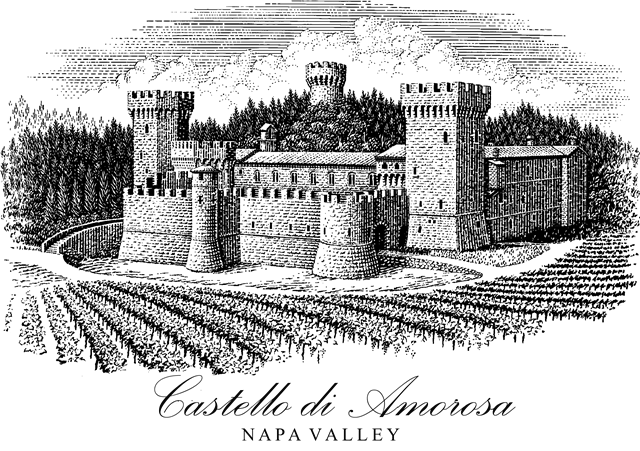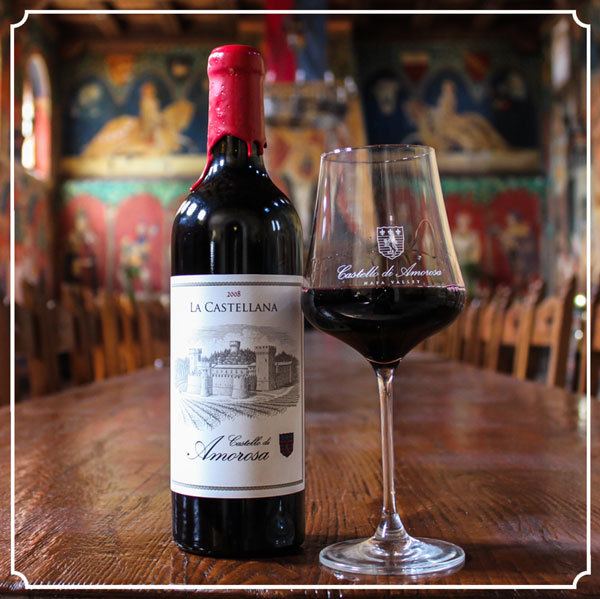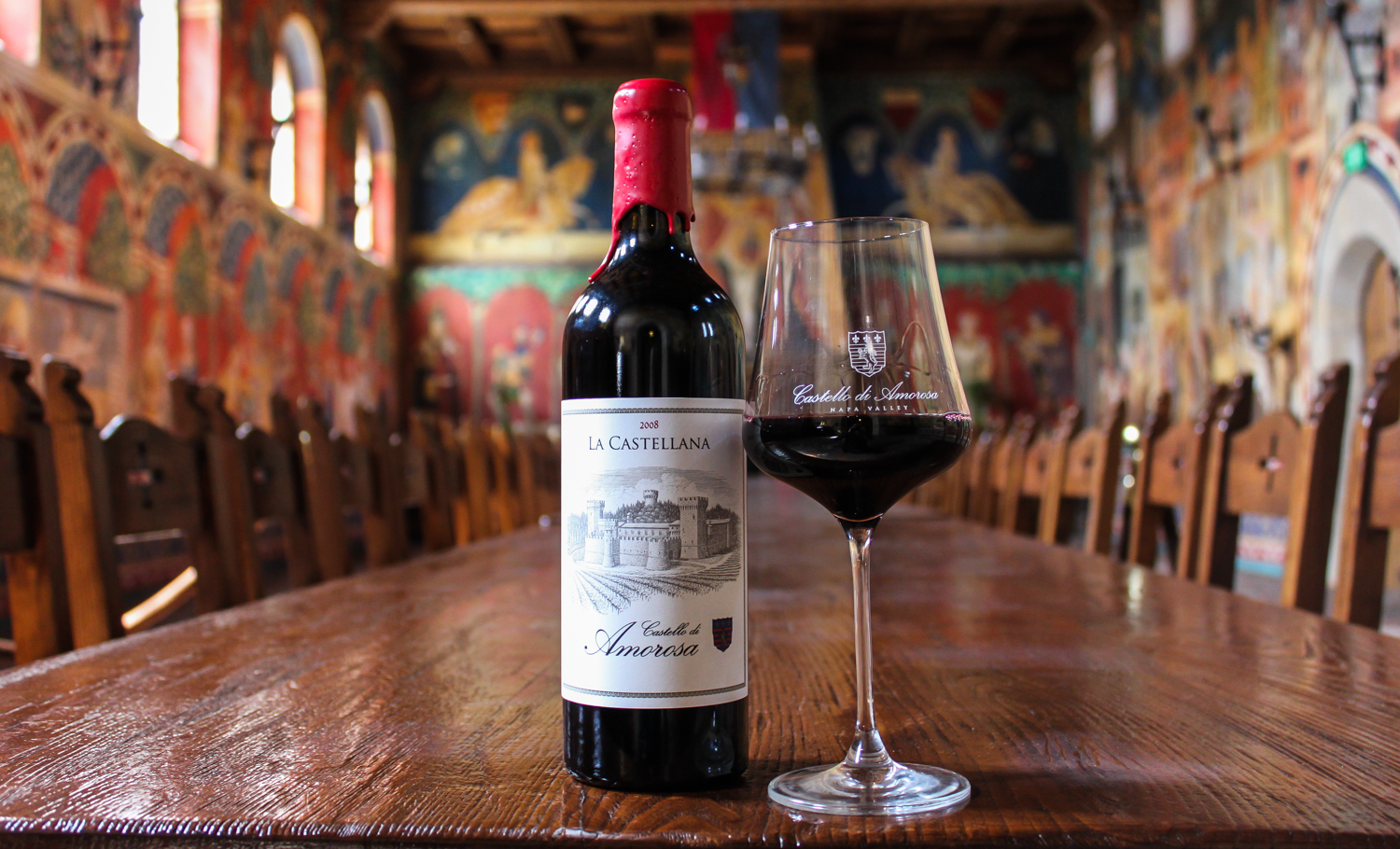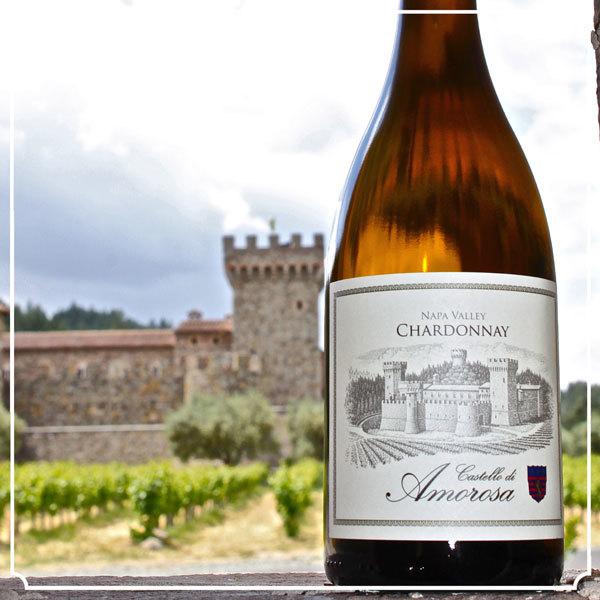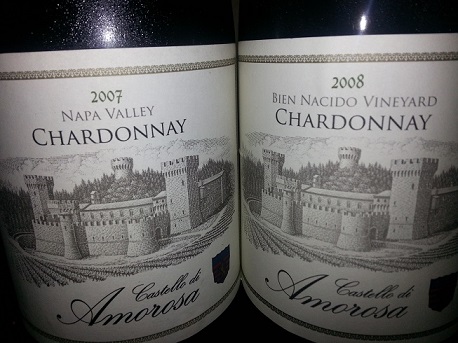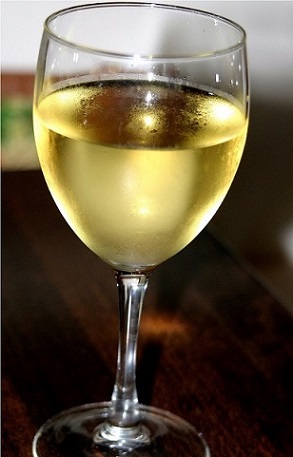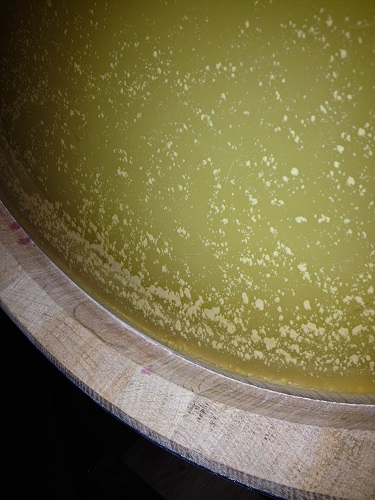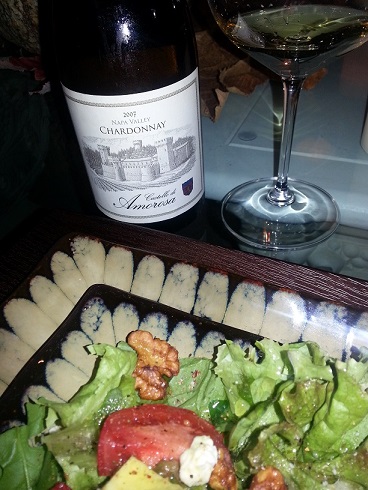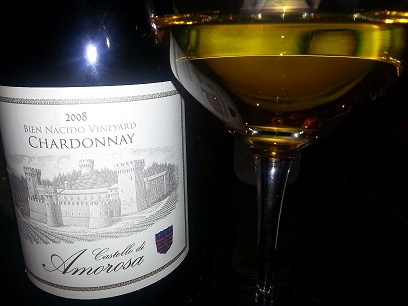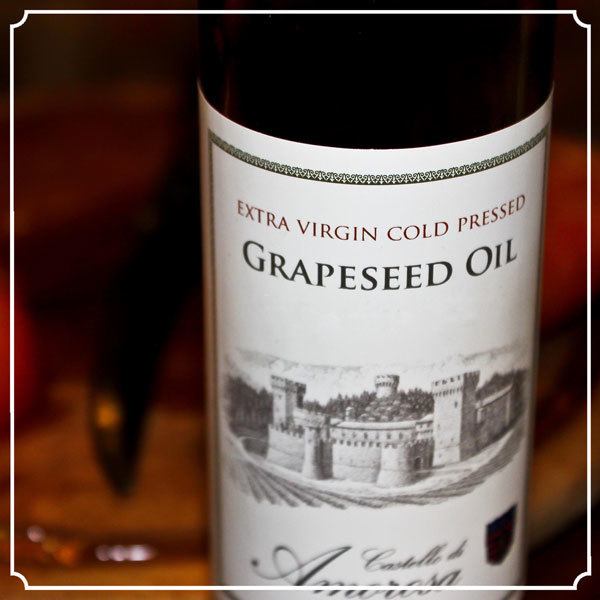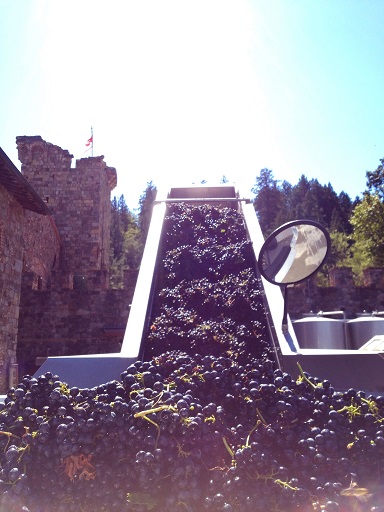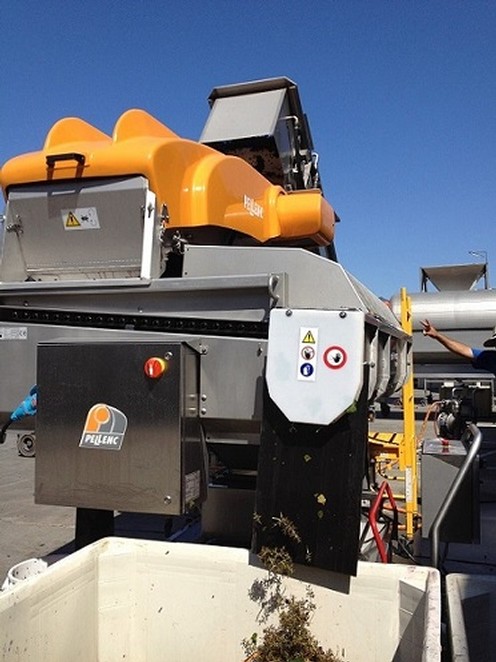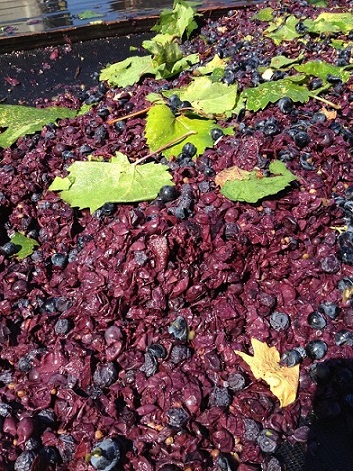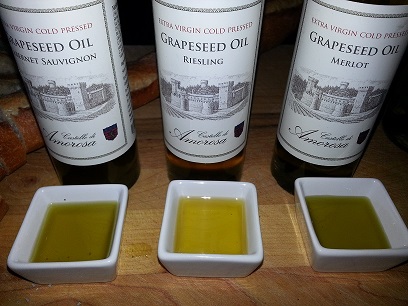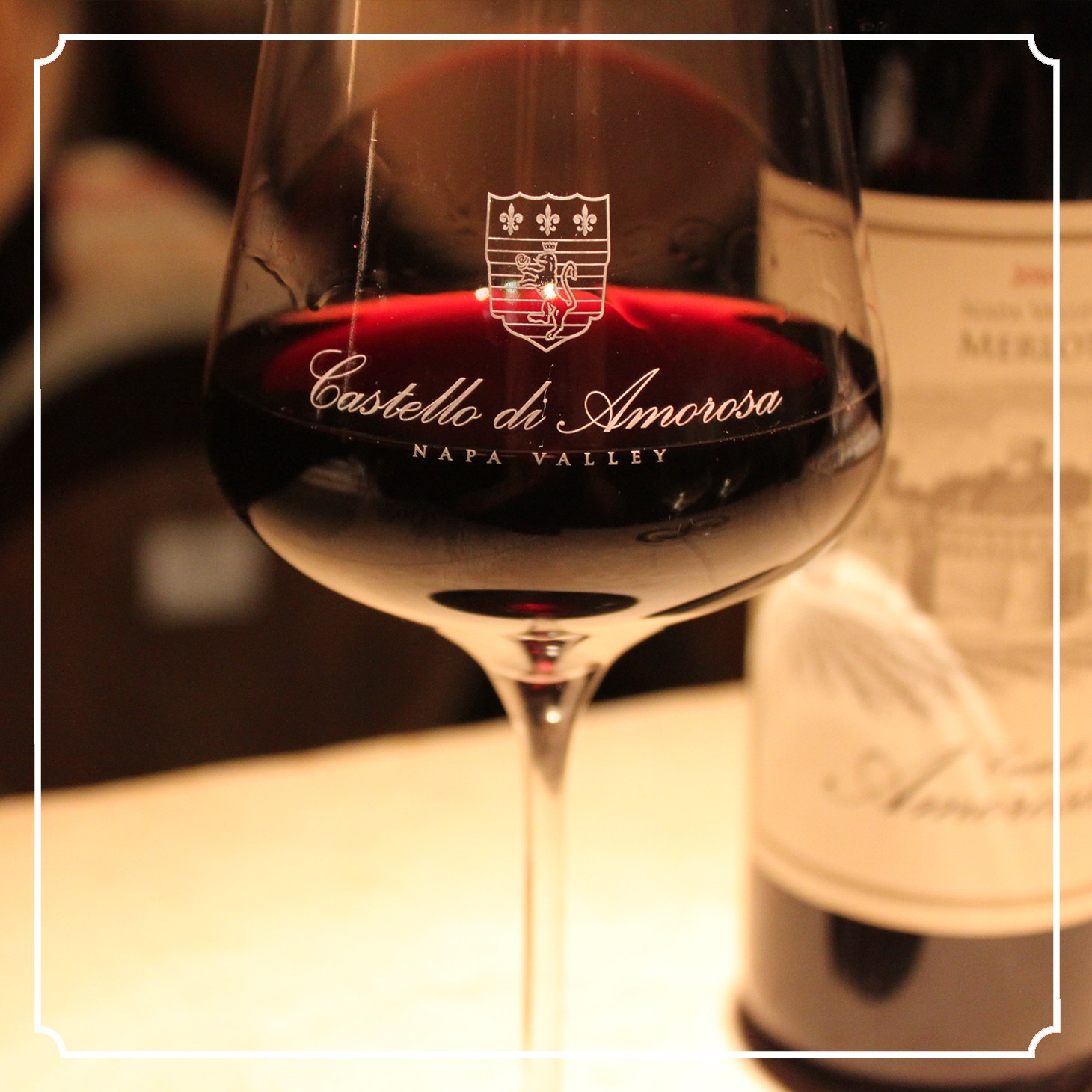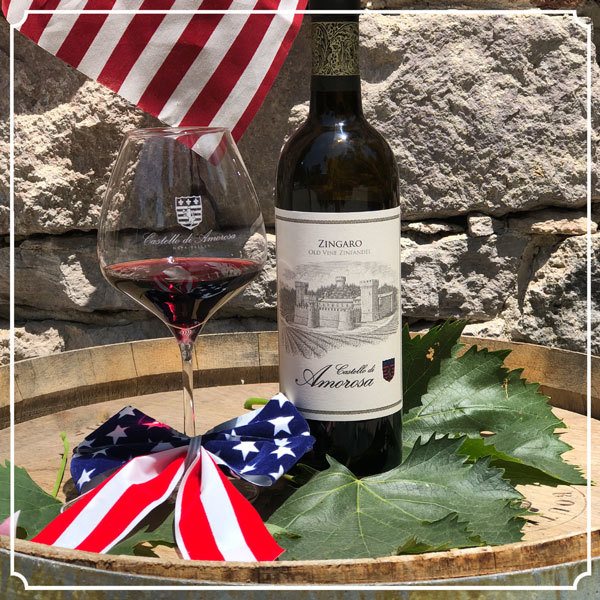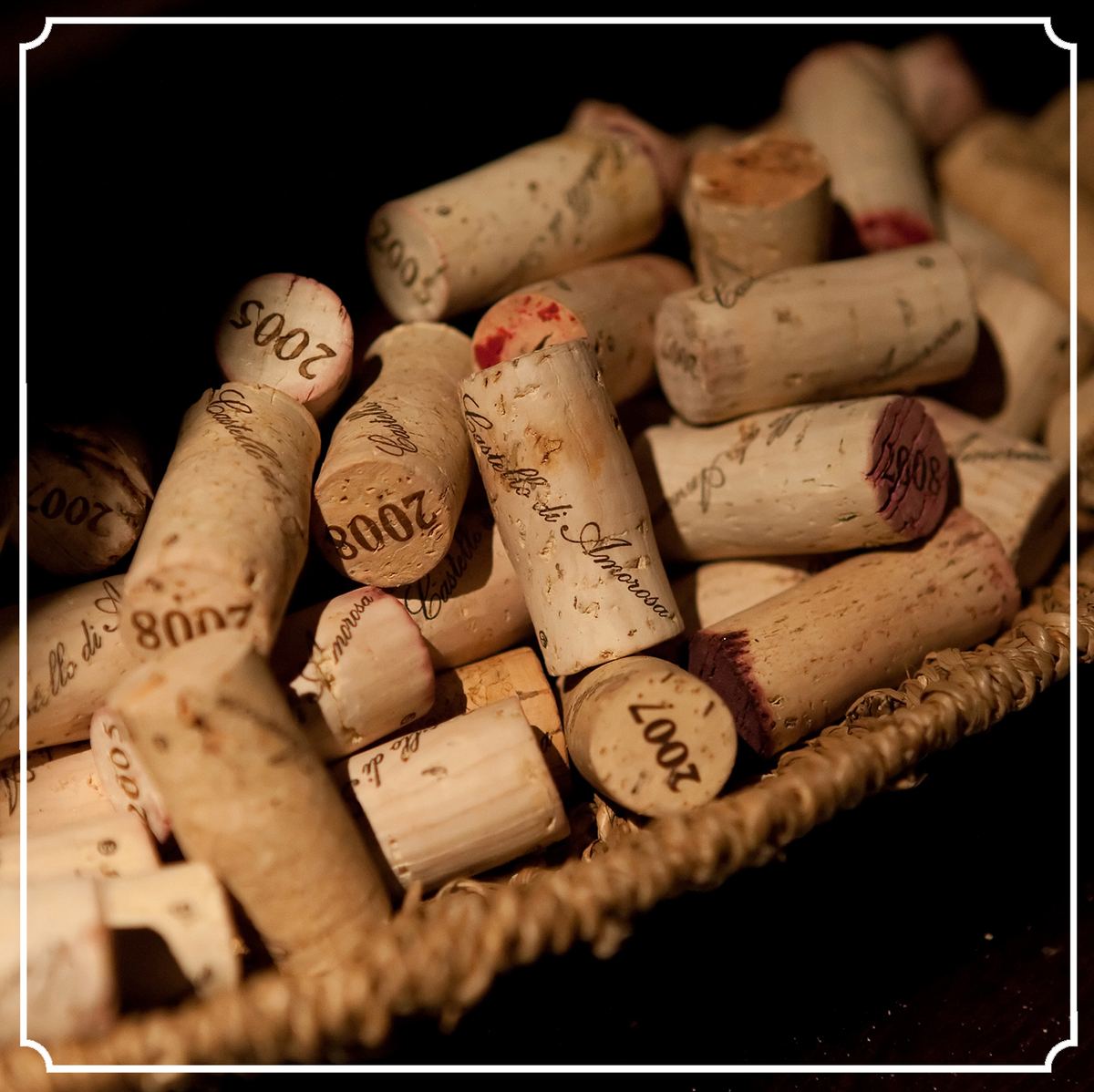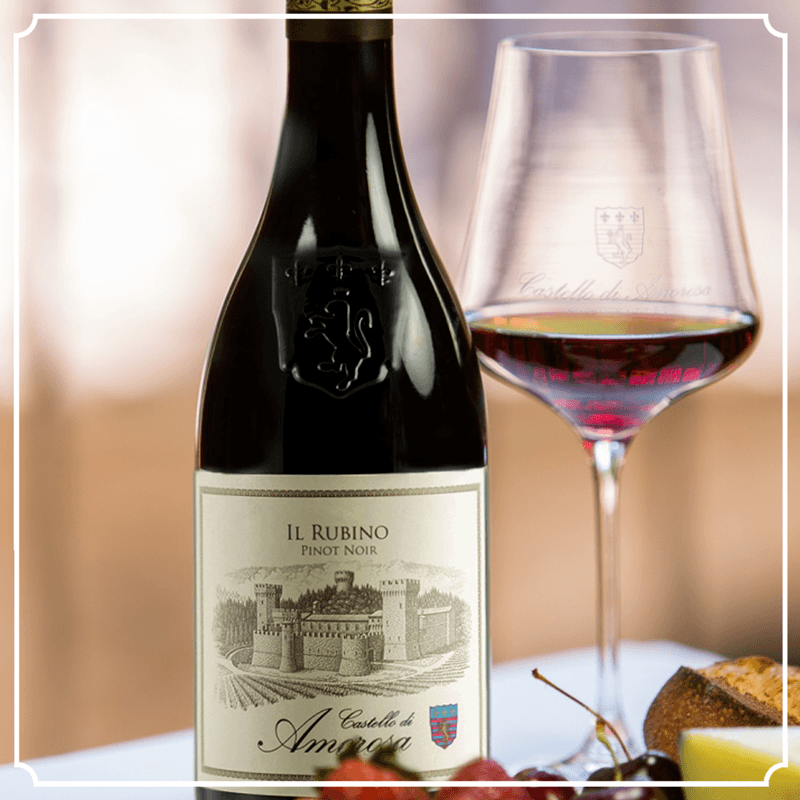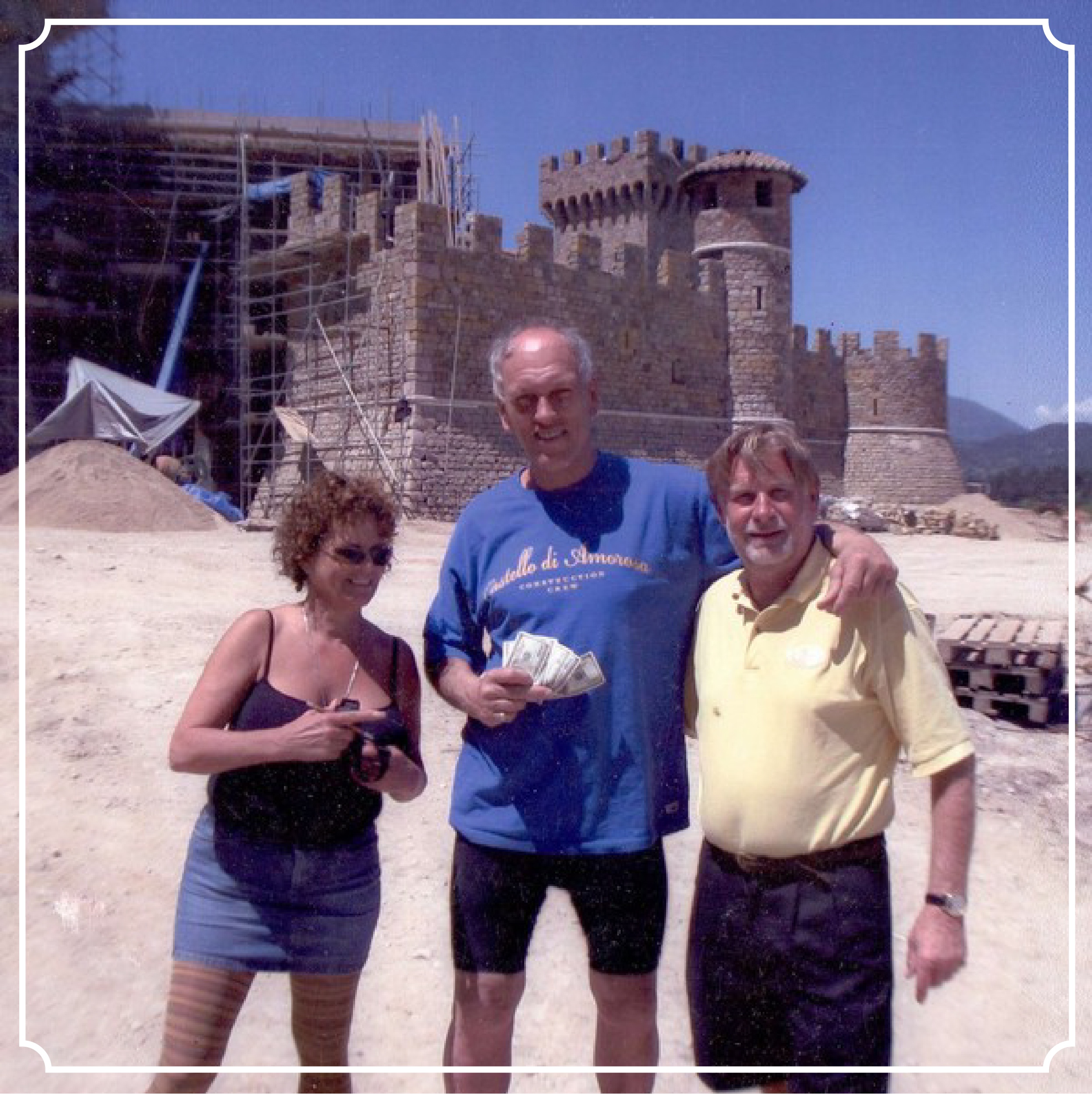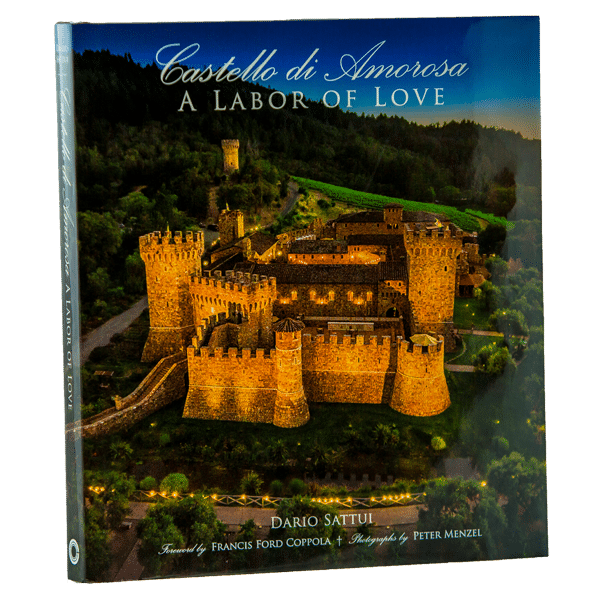The Perfect Blend

Mary Davidek
The Perfect Wine Blend: Blending Grapes & Varietals
We are getting ready for a wedding in our family, my step-daughter is getting married in September. Last week my husband and I had a pre-nuptial trip to Boise, Idaho for talks of wedding plans. This was all to be considered and discussed at a dinner which included my husband’s first wife along with the future parents-in- law, yikes! Decisions had to be made on apparel, cakes, invitations, shoes, music, relatives and ever-growing extended families. The evening was an interesting and diverse mix of people with varied relationships and ages spanning from 25 to 65. There were enough backgrounds and life events to fill a night’s conversations with entertaining and thought-provoking stories. No topic was out of bounds or taboo as we covered everything from the best way to ripen avocados to current affairs to wedding invitations. It was a great evening of fun, laughter and growth. As we were tidying up my step-daughter said to me, “wow, tonight was certainly an interesting blend”.
Which, of course, made me think about wine. Totally understandable as the evening had consisted of at least 4 different bottles of vino and they were– blends. While some varietals like Pinot Noir or Chardonnay are best as a single varietal because blending can overwhelm the unique characteristics of thin-skinned grapes, many varietals suffer from this imposed solitary confinement. Wine blends often deliver increased complexity and are more interesting than single varietal wines. In fact, some of the world’s greatest wines are made from a blend of grapes rather than a single varietal.
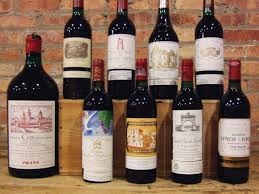
Some of the most prestigious wines in the world are blends. Bordeaux wines from the left bank of the Gironde River in France are typically blends of Cabernet Sauvignon with Merlot and Cabernet Franc. When blending Bordeaux varietals in the U.S. they are known as Meritage blends.The pronunciation is often subject of debate but the correct usage rhymes with heritage.
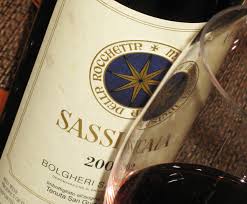
Sassicaia is approximately 15% Cabernet Franc blended with Cabernet Sauvignon to create one of the most sought after and priciest Super Tuscan wines made.
Robert Parker of Wine Advocate described Castello di Amorosa ‘s Super Tuscan blend, La Castellana as “Full-bodied, lush and seductive”. La Castellana marries Sangiovese and Merlot with Cabernet Sauvignon to create this blended masterpiece.
Blending grapes gives the advantage and potential of adding complexity to the resulting wine blend and provides a tapestry of multiple flavors and aromatics. It also offers an opportunity to achieve balance– the happy ‘marriage’ of fruit, acid, tannin, alcohol, and oak that makes great wines sing in perfect harmonic splendor and not-so-great wines seem full of wrong notes and missed opportunities.
People and grapes, we’re not so different.
In Defense Of Napa Valley's Veteran Wine Hero

Mary Davidek
In Defense Of Napa Valley’s Veteran Wine Hero
I was at a dinner party a couple of weeks ago and the subject of Napa Valley wine came up – I realize this is not shocking nor in itself blog-worthy! However, at this dinner we were specifically discussing Chardonnay. Maybe it was the time year as Chardonnay was the grape harvest du jour. Maybe it was the company I was in; long time Napa locals and wine makers. Maybe it was the wine I brought for the occasion.
This was mildly ironic as not more than 8 years prior I attended an ABC dinner, an entire night of Anything But Chardonnay. Admittedly, I was a reluctant participant but I attended *sigh* and took part in the grape bashing. “Too oaky!” claimed one reveler. “Manipulated and contrived” cried another! My favorite denial of this classic varietal was “Chardonnay does not pair well with ANY food!”
Wow–quite a statement! However, to put it bluntly; they were wrong.
It is now a number of years later and we are approaching Veteran’s Day. In America, this day is reserved as a time to reflect and celebrate past heroes and champions. Perhaps wine lovers should follow suit and pay respect to one of America’s wine heroes. After all, it was a California Chardonnay that won the 1976 Paris tasting and brought recognition and eventually fame to a small farming community; Napa Valley.
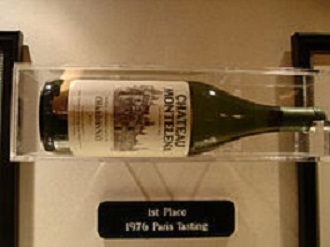
Chardonnay is the second most planted white wine varietal in France and remains the most planted white wine grape on the planet. Additionally, Chardonnay styles differ dramatically and can reflect the artistry of wine making; buttery and oaky, crisp and fruity, austere with minerality. Combined with the diversity of soil and climatic zones, Chardonnay exhibits varied complexities and offers ageble wines with broad appeal. Plus, in the last 20 years wine makers have found malolactic fermentation and oak ageing are winemaking tools, but don’t have to be used fully, or at all, with every Chardonnay.
I regret my brief slide into the ABC movement. While our preferences may change as we explore different growing regions, varietals, and styles of winemaking; it is important to stay open-minded and savor new discoveries. And sometimes, we just have to stick to our guns and defend tried and true veterans that brought victory to the field and eventually… to our glass!
Chardonnay is primarily fermented in oak and is aged sur lie or on the lees. Lees refers to deposits of residual yeast and other particles occurring during fermentation. Ageing sur lie softens the taste of Chardonnay, especially on the finish. Oak provides oils and resins which not only add to the overall flavor and character of the wine but make Chardonnay a white wine which can benefit from bottle ageing.
The 2007 Napa Valley Chardonnay has become ripe and juicy with golden apple, comice pear and lightly toasted brulee. If you have any of this Castello beauty hiding in the corner bring it out this Thanksgiving! Enjoy with a hearty harvest salad garnished with candied pecans and crumbled Feta
The 2008 Castello di Amorosa Bien Nacido Chardonnay knocked my proverbial wine-socks off! At five years from vintage this was visually beautiful and simply stunning in the glass. Vanilla and spice were the words repeated again and again, however, the 2008 Bien Nacido retained its fruit and was vivid on the palate.
Chardonnay may not be the traditional go-to for Ahi salad, but, a bit of ageing leveled off the acidity and the velvety texture of the avocado played off the creamy notes of the Chardonnay. This was a delicious and luxurious pairing.
Ahi and Avocado Salad with Ponzu 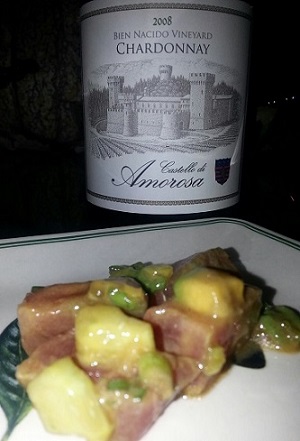
- ½ cup ponzu or soy sauce
- 3 Tbsp. water
- 2 Tbsp. rice vinegar
- 1 Tbsp. grated ginger
- 1 thinly sliced green onion
- 1 ½ tsp. lime juice w/ zest to taste
- Mix well and pour over cubed Ahi and Avocado
Grape Seed Oil- Enlightened

Mary Davidek
Meet Mary
Grape Seed Oil Process – Enlightened
For the last 19 months, I have been on a journey of more healthful eating. This has included only small quantities of lean meats with most animal proteins in the family of fish and fowl. Most of my daily caloric intake comes from fiber via fruit, vegetables, nuts and whole grains. I thought I was doing great; losing pounds, gaining stamina….I felt renewed…invigorated… healthy. However, while a high-fat, high-calorie diet increases the risk of gallstones, apparently a very low fat weight loss plan can also cause issues. While a low fat diet allows you to lose weight, with smaller quantities of fat and oil to break down, the gallbladder does not contract or empty as frequently, and, as a result, this may produce a build-up of bile and possibly an increased risk of gallstones.
With my gallbladder permanently out of the equation, I’ve taken time in the last few weeks for a little research…. along with a little lab work (i.e. cooking in the kitchen) in an effort to repair my relationship with fats and oils.
Oils are fats that are liquid at room temperature. Although oils are not a food group, they provide essential nutrients and are therefore included in USDA recommendations of what to eat. Most fats should be polyunsaturated (PUFA) or monounsaturated (MUFA) fats. Oils are the major source of MUFAs and PUFAs in the diet.
My research eventually took me to an article published by Bon Appétit. Who better than the good eating experts to help guide me in my search for healthy and tasty oil? “Some fat is actually good for you,” the article quotes Alice H. Lichtenstein, director of the cardiovascular nutrition laboratory at Tufts University. “But, to get the most from fats, you need to go beyond olive oil. Open your cupboard to new flavors, cooking temperatures–and health benefits–by diversifying your oils.” In the number one position of most healthful oil on Bon Appétit’s list—grape seed oil! High in polyunsaturated fats and vitamin E, grape seed oil has a high smoke point, which makes it a good substitute for olive or vegetable oils for a sauté or stir-fry, and because it has light and clean flavors on the palate, it lets top-notch ingredients stand out.
I remain diligent when it comes to healthy eating and food choices. However, as a discerning skeptic my cynical tendencies combined with my resistance to change has always played second string to the great equalizer; taste! Donning a lab coat for this foray instead of an apron, I must experiment. I made a few fairly standard favorites where I traditionally used olive oil and substituted grape seed oil.
The results were en-lightening!
The process begins on the conveyor for these yummy clusters. Ready to go into the hopper where the stems will be separated and then composted.
Although we are a world of organic goals, long term sustainability is realistic and achievable now. The stems are separated from the clusters and prepared for composting and provide vital nutrients in the vineyard.
After fermentation and a final press of the skins, the pumace is taken and the seeds will be separated and dried.
. 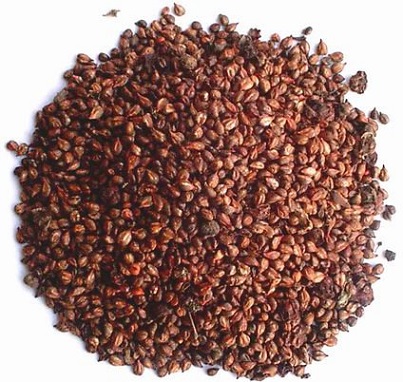
After several months, the dried grape seeds are ready to be pressed and oil is extracted from the seeds. The oil is obtained through pressing and grinding seeds with the use of stainless steel presses. Since grape seeds are discarded as part of the wine making process, the extraction of the oil is an efficient and sustainable use of a byproduct.
The best oils are cold pressed. Although pressing and grinding produces heat through friction, the temperature must not rise above 120°F for any oil to be considered cold pressed. Cold pressed oils retain their flavor, aroma, and nutritional value. Sample cold pressed grape seed oils at Castello di Amorosa on the Royal Food and Wine Pairing tour.
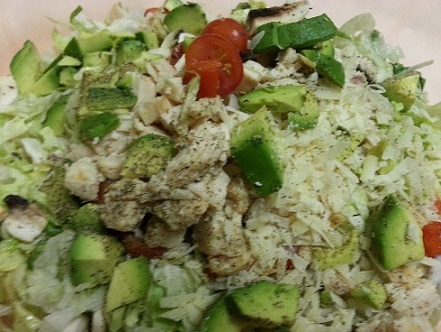
Since grape seed oil is lighter than olive oil, I was having a problem with a pool of oil accumulating at the bottom of the salad bowl. Problem solved; when making salads, I now add the seasonings and toss it which coats the lettuce with the seasoning giving the oil something to adhere to. Light, healthy and the lettuce retained its crispness.
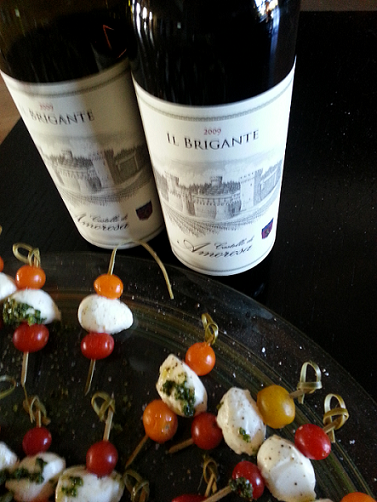
I drizzled a little Sauvignon Blanc grape seed oil and basil on the bruschetta bites—delicious!
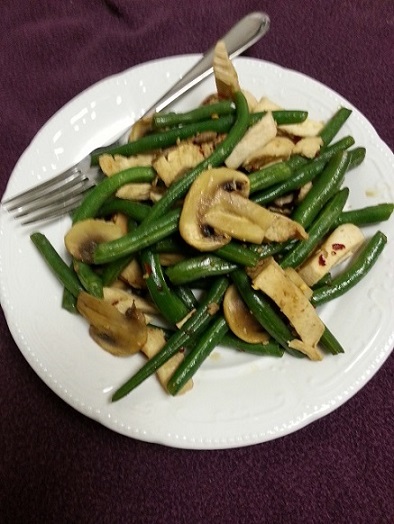
Stir fry and sautés are my favorite use of grape seed oil. Since grape seed oil has a higher smoking point than olive oil, veggies and meat are added to a hotter pan. Plus, the grape seed oil gives off very little flavor in a sauté and this really lets the ingredients shine.
Merlot, Part 2 - A Sideways Glance

Mary Davidek
Merlot, Part 2 – A Sideways Glance – Exploring the Regions
The night of our 2010 Castello Holiday Party I was seated at a table with executive winemaker Brooks Painter. As dessert was served, a decadent Bouche Noelle, we were contemplating our next pour. No small task! Lovers of the sweet anxiously awaited the succulent Late Harvest Gewurztraminer. Tempting. However, in the corner of the rooms I saw a bottle of something red. To my delight it was the highly anticipated 2006 Castello di Amorosa Merlot. Rich chocolate goodness with Merlot? Brooks and I agreed; Yes, please! We toasted another great year and then…..Silence as we took a moment to contemplate the wine. This Merlot was stellar. Heavy intoxicating aromatics with a smooth velvety palate of bittersweet cocoa and blackberries. I asked Brooks where the fruit was sourced from as it differed from the past fruit-driven Merlots of Castello. For the 2006 Merlot Brooks brought in fruit from vineyards near the south end of the Napa Valley, closer to the San Pablo Bay and the fog that rolls in off the Pacific. Made sense. Cooler vineyard sites allow the fruit to mature slowly while maintaining structure and natural acidity. Our admiration was well-deserved as the 2006 Castello di Amorosa release was voted one of the best Napa Valley Merlots of the vintage.
Merlot: typically more approachable than Cabernet Sauvignon, more versatile with food – what’s with all the bad press? (pun intended) Some of my most memorable ‘wine dinners’ have prominently featured this viticultural also-ran. Later that night my thoughts turned to past Merlot Super Moments. This trip down memory lane required a bit of travel.
First stop: Italy. Although not specifically known for great Merlot, a few standouts are indeed vino Italiano. Tuscany’s Galatrona Petrolo and Masseto by Ornellaia are two of the finest expressions of Merlot I’ve had. Unfortunately price and availability can be prohibitive. For lovely lush Italian Merlot that won’t break the bank, travel north to the Friuli-Venezia region. Livio Felluga produces Merlot that never disappoints. For approximately $20 this luxurious red is perfect with slow braised fork-tender short ribs and mushroom risotto…..listen closely…..those are angels singing.
Now, across the globe to South America. Chile is now the 4th largest exporter of wine to the U.S. and has 33,000 acres planted to Merlot. (2nd most planted varietal to Cabernet Sauvignon of course). I went to a BBQ last summer and brought a few bottles of one of my favorites from this exciting region; Santa Ema. This $10 Merlot has and edge and is always met with approval. Turns out this southern hemisphere bottling works great with spice rubbed grilled chicken quarters.
And back to where it all began: France. Not only is Merlot the most planted varietal in the country, in the Bordeaux region Merlot accounts for 172,000 acres planted compared to Cabernet Sauvignon’s 72,000. In St. Emilion, 70% of all planted grapes are Merlot. Wines from this region, although Merlot dominant, are primarily blends; they embody elegance and restraint. Be adventurous….pick up a few right-bank’ers in the $30-$40 range and enjoy with roast leg of lamb or grilled duck breast. Two of my favorites: Chateau Monbousquet and Chateau Tertre Roteboeuf, my favorite prime roast beef wine.
I applaud and encourage all global explorations of this soft maligned varietal. In Napa Valley, where Merlot excels at higher elevations and cooler vineyard sites, this once exploited grape is being produced with new vigor and excitement.
Be adventurous and in your endeavors may you find out why Merlot is said to be the “flesh on the Cabernet Sauvignon’s bones.”
Cheers!
Mary Davidek C.S, C.S.W
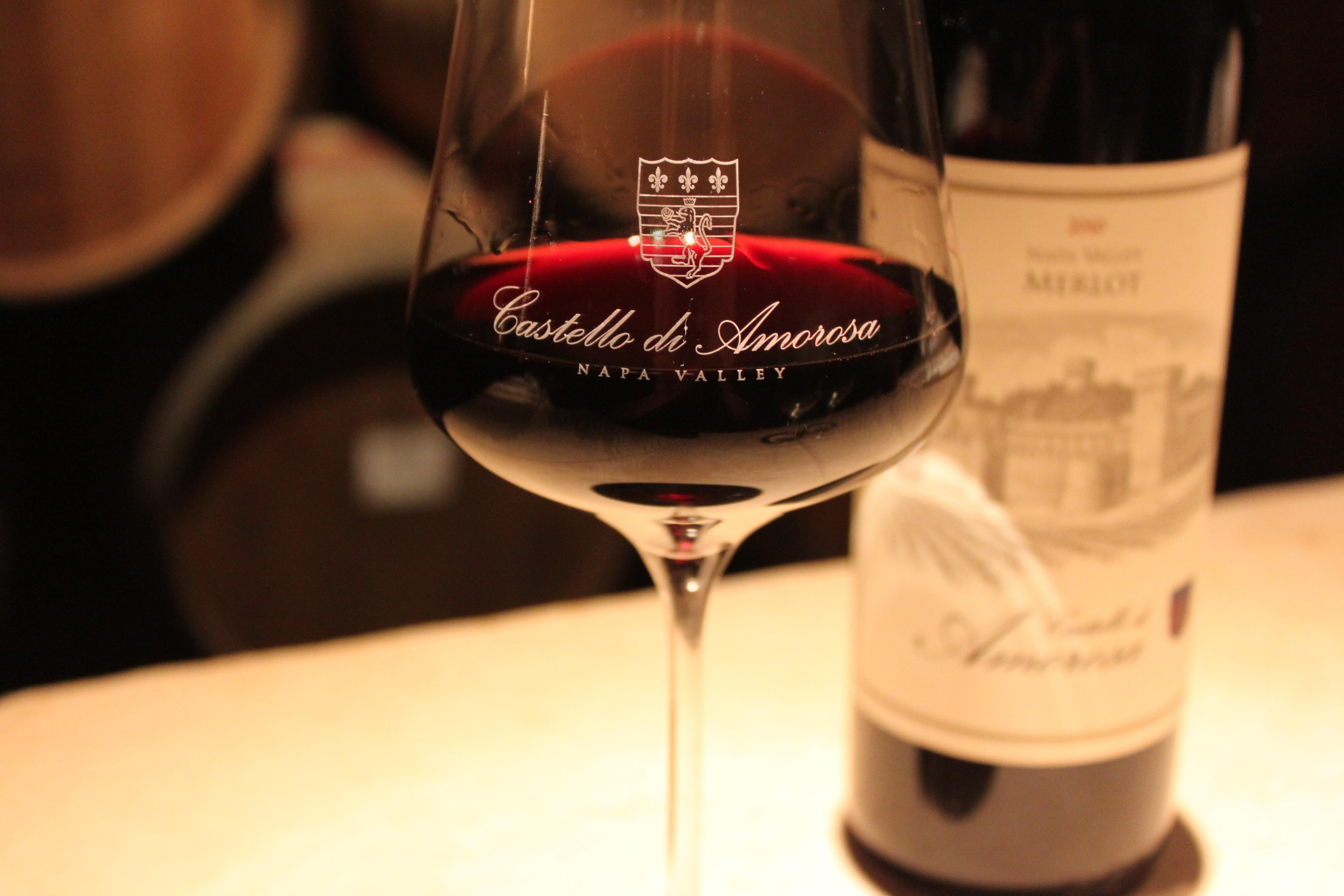
Merlot, Part 1 - A Sideways Glance

Mary Davidek
Merlot, Part 1 – A Sideways Glance
I have always rooted for the underdog, drawn to the dark horse; sure things and odds on favorites need not apply…..My Dad would have said being a Dodger fan has taken its toll. And so it goes; when it comes to wine my preference also leans to the runner-up. I often pass on the popular choice and instead, opt for its viticulture next of kin. When Cabernet Sauvignon is what’s for dinner, trust I will be sipping Merlot.
Not to say dark brooding Cabernet isn’t tempting with its flirtatious undertones of blackberry, cassis, dark cherry and chocolate…..wait…..am I describing Merlot? Yes. In fact, on a palate chart Cabernet and Merlot are kissing cousins and easily confused. If you want to have some fun, (admittedly wine-geeky fun) invite a few friends for a blind-tasting featuring Cabernet and Merlot. Make certain the wines are of similar pedigree, bottles in the $25 to $45 price range offer worthy contenders. Castello di Amorosa’s 2006 and 2008 Merlot are two of my favorite wines produced by Brooks Painter and his Castello team. Put these beauties in the lineup and even in the presence of well-seasoned palates, I predict a dead heat; a 50/50 split.
In tasting panels Merlot is said to possess a softness or a roundness not typically associated with Cabernet. Why then the ridicule for this benevolent cultivar, which is, in fact, the most widely planted grape in all of France!? (Sacre bleu). Truth be told, Merlot is prolific in many regions and quite possibly this is at the root of its undoing.
Merlot could wear the banner “Just Because You Can Grow Something Doesn’t Mean You Should” but we’ll cover geography in Part 2. This over-abundance and plenitude eventually lead to Merlot becoming the marketing darling of the 90’s. Finally a wine our thick American tongues could pronounce. (I wonder how many “peanut noyas” were ordered?) Restaurants eagerly filled their wine lockers with this fashionable red. However, this trend ran its course as the over-planted Merlot often bordered on insipid rather than inspiring and earned a “sideways” glance.
Seemingly overnight Merlot became ‘persona non grata’ in tasting rooms as an often quoted movie line rang through the wine country. Out went Merlot and in came the next grape of favor. (shh, don’t tell me chateau Petrus!)
Well, fear not Merlot loving readers! Merlot is back with a vengeance and it’s better than ever. Next I’ll cover a few regions that are cultivating this classic with new vigor and excitement.
Until then, go drink some Merlot!
Cheers!
Mary Davidek C. S., S.W.
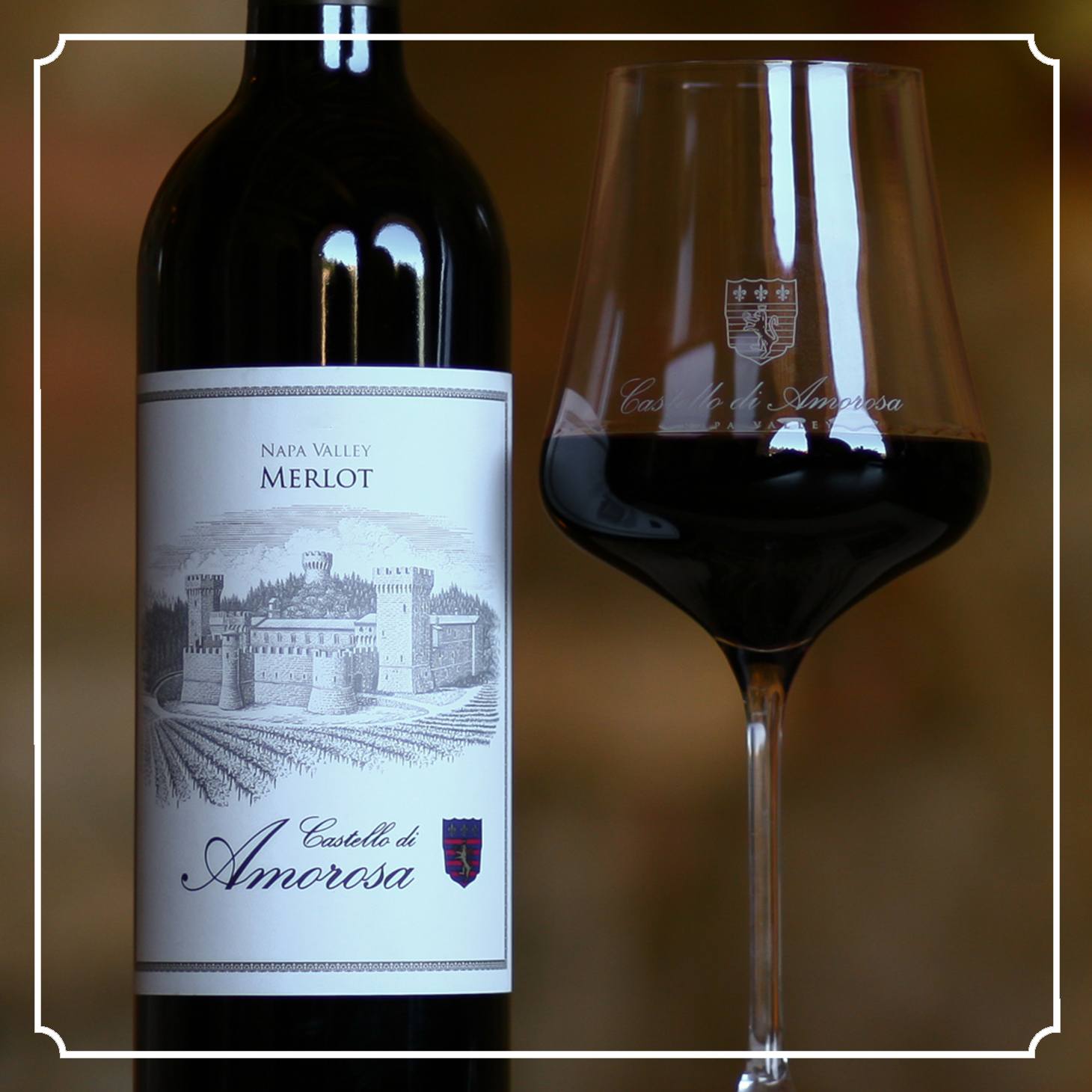
Dario Donates $1 Million to the Boys & Girls Club of Calistoga

Dario Sattui
Dario Sattui donates $1 Million to Boys & Girls Club of St. Helena and Calistoga
Dario Sattui, owner of V. Sattui Winery in St. Helena and Castello di Amorosa in Calistoga, has pledged $1 million to the Boys & Girls Clubs of St. Helena and Calistoga for its future construction of a permanent Club facility in Calistoga.
Listen to Dario’s interview on KGO 810:
https://soundcloud.com/thecastello/dario-sattui-donates-one
“I am really proud to make this small contribution to the future of our community, and believe this will make a positive impact. Let’s hope the Club can raise the rest of the money quickly and open the new Club, “said Sattui.
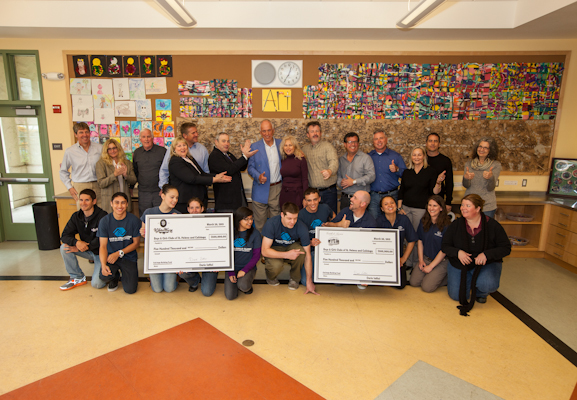
Dario Sattui with the Board of Directors and Staff of the Boys and Girls Club of St. Helena and Calistoga
“This is a landmark moment for our organization,” commented Club Executive Director Jay Templeton. “Mr. Sattui’s magnificent lead gift provides us the framework to begin focused discussions of our Calistoga project. The Boys & Girls Clubs and Mr. Sattui share the same values of respect for the environment, and the importance of agriculture, nutrition, exercise, academics, entrepreneurship, technology skills and guidance in preparing today’s youth to be productive 21st century citizens.”
Currently the Boys & Girls Clubs of St. Helena and Calistoga operates an after-school program located at the Calistoga Elementary School on Berry Street. In 2012, registered youth membership at that site was 395 with an average daily attendance of 129. The Club also operates a Teen Center located in the city’s Monhoff Center on Grant Street adjacent to the Calistoga Junior-Senior High School.
“For some time, the Board of Directors has discussed a Calistoga project,” said Templeton. “Our St. Helena facility was opened in January of 2008 following a successful capital campaign. The next vision has been to establish a permanent facility in Calistoga through community fundraising.”
On April 26th, the Board of Directors will hold a Board retreat specifically to discuss the Club’s Calistoga future, including discussions on a potential location, cost, size, fundraising and timing. “We hope to come out of that day with basic direction and to set the course for a new Boys & Girls Club building in Calistoga,” remarked Templeton.
Sattui will attend the Club’s Board of Directors meeting at noon on March 20th to present two $500,000 checks. Each of his local businesses, V. Sattui Winery and Castello di Amorosa are contributing jointly.
The Sattui donation is the second lead gift received for the future Calistoga project. In November of 2012, the DeLong-Sweet Family Foundation made the first contribution, a $250,000 pledge arranged by Calistoga residents Paul and Pamela Ingalls. The Boys & Girls Club hopes these early donations are an indication of the support it will have and need in order to complete the Calistoga capital campaign and the construction project.

The children of the Boys and Girls Club of St. Helena and Calistoga with Dario Sattui and staff.
Noted Board of Directors President, Kathleen Herdell, “We are thrilled by the generosity of Dario, Paul and Pamela. Their contributions will touch the lives of Up-Valley children for generations to come. ‘Thank you’ just doesn’t adequately capture the gratitude we feel for these visionaries and role models. They are helping to give the kids a safe and positive place to be after school and all summer long. Having watched the excited faces of kids as they enter the St. Helena Clubhouse, I can’t wait to give the Calistoga children that same experience.”
Red, White and Bleu …… Let Freedom Ring!

Mary Davidek
Meet Mary
Red, White and Bleu …… Let Freedom Ring!
Freedom; no single word in the English language is more synonymous with America. Case in point, “Life, Liberty, and the pursuit of Happiness” is a well-known phrase in the United States Declaration of Independence as is inalienable rights which the Declaration says all human beings have been given. Even when certain ‘dry” movements (prohibition 1920-1933) threatened one inalienable right, the powers that be eventually restored this right and true freedom was reinstated.
Without starting a political debate, let’s just talk about the fun stuff! We have the right to eat what we like and drink what we choose. In the United States we boast more than 3,700 certified wineries and in Napa, there are more than 450 wineries in this relatively tiny valley. It is obvious happiness has been justly pursued. For the purpose of this blog and this holiday let’s concentrate on a quintessentially American if not, Californian grape; Zinfandel.
Also known as Primitivo, Zinfandel is planted in nearly 15% of all California’s vineyards. Many debates have ensued as to who can rightly lay claim to this popular cultivar’s origination but DNA fingerprinting revealed it is genetically equivalent to Croatian grapes (which I will spare you the pronunciation of) as well as the Primitivo variety traditionally grown in the Puglia region of Italy. Eventually, this grape found its way to the United States in the mid-19th century, and became known by the name “Zinfandel”. Zinfandel thrives in Napa’s Mediterranean climate as well as other growing regions of California. Geographical and climatic differences are expressive and many; robust and tannic, fruity and candied, complex and aromatic.
As stated, this is about fun, freedom and the right to pursue both. This 4th of July, you will find me celebrating the red, white and blue with another red, white and bleu. Castello di Amorosa Zingaro (Old Vine Zinfandel) and a yummy burger off the grill. I like 2 cheeses to top my burger, a little white cheddar for creaminess on the palate and a few bleu cheese crumbles for a salty zing. With all the usual burger suspects present and accounted for– this red white and bleu is perfect to get you in the mood for a night of fireworks.
Happy 4th of July—Let Freedom Ring!
Mary Davidek, C.S., C.S.W.
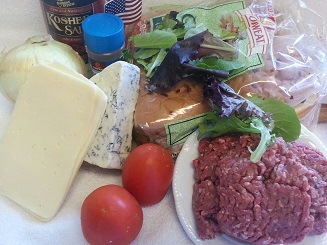
Everything for our decadent 4th of July burgers.
Remember, on the grill or the stove–160°F is the safety zone for hamburger.
Castello di Amorosa’s Zinfandel from Russian River Valley is spicy and fruity with hints of potpourri and dried Bing Cherries. Just big and bright enough for the Bleu and Cheddar.
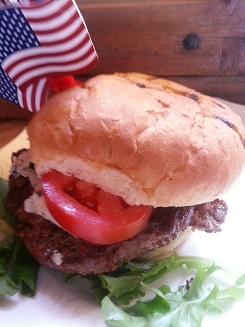
Happiness pursued and achieved–enjoy with your firework spectacular!
Corkage Fees and BYOB – Part 1

Mary Davidek
Corkage Fees and BYOB – Part 1
BYOB = Bring Your Own Bottle
Corkage Fee = the fee charged to open and serve a bottle of wine not purchased at the dining establishment
Every restaurant has restrictions and specifications which are said to cover the cost of opening a bottle, providing stemware, and serving the wine. Realistically, a corkage fee is charged to cover lost revenue. I am unabashedly a self-professed BYOB junkie; a dedicated corkage hound ……and I go to extremes in my pursuit. Here are a few situations I have encountered and simple resolutions which may help in your quest.
1. Call the restaurant or check their website prior to your reservation as fees and restrictions vary. Some restaurants may impose a 1-bottle limit and others may have more tempting ways to capture your attention. A growing trend; restaurants charge a fee but will comp it one for one, for every bottle purchased. For example, restaurant “X” charged $25 corkage. I brought in a bottle of Castello di Amorosa Cabernet Sauvignon. From the restaurant wine list I selected a bottle of Sauvignon Blanc to enjoy with apps. I love a zippy Sauvignon Blanc with bruschetta and goat cheese on a warm baguette; sublime. The bottle I purchased was $28. That’s right, the corkage fee for my Castello di Amorosa bottle was waived. This is clearly a win-win. Typically I bring in a red and purchase a white from the list as even the grandest wine menu offers a tasty and affordable white wine.
2. A common and reasonable request; the bottle you bring in cannot be available for purchase on the existing wine list. To ensure your selection for carry-in is acceptable, browse the wine list on-line or request a fax or emailed copy prior to your planned visit. Here is my fool-proof solution. Bring in wine from a winery that does not distribute. This is becoming easier as more small and mid-sized wineries are opting for direct-to –consumer sales only. Castello di Amorosa wines have been a fixture on my restaurant outings for this very reason. Restaurant wine lists change weekly and this takes the guess work out of it.
3. Prepare your bottles. If you want a chilled bottle of bubbly with your Dungeness crab; chill it. If you are bringing a Napa Cab with a little age on it, stand it up for a few hours prior to leaving which allows sediment to collect at the bottom.
4. I have seen bottles transported in everything from a paper shopping tote to a plastic grocery bag. My advice; invest in a respectable wine carrier. From leather totes to canvas carrying bags to decorative wine boxes – your wine should travel in style.
Good news for us food and wine lovers, corkage and BYOB is becoming an accepted standard. Restaurant owners are adopting more favorable corkage policies as a marketing tool.
Stay tuned……Part 2 coming up.
Cheers!
Mary Davidek C. S. , C.S.W.
Perfect Pairings Dynamic Duo

Mary Davidek
Perfect Pairings Dynamic Duo
The first time I saw the man who would eventually become my husband I was dumb-struck (quite a confession those who know me will attest). Just my type; tall, dark (it was summer), and handsome. After a chat over a glass of vino (what else?), I made the fatal mistake of telling him I thought he was smarter than I was. I say fatal mistake as it is now 24 years later and he won’t let me forget that statement.
24 years later and he won’t let me forget that statement.
Our friends often tell us they have never met 2 people more suited for each other, meant to be together. Better together as 1 than separate as 2. Like peanut butter and jelly, milk and cookies, peas and carrots……it just works.
Perfect pairings certainly enhance and intensify and one thing which is singularly good, but with food and wine, perfect pairings take on a new meaning. If you have ever been on the Royal Pairing Tour at Castello di Amorosa you may have experienced a few of these perfect pairings. A rich pate’ with Castello’s award winning Il Passito comes to mind. Sommeliers agree this match is perfection. Popular wine writer Karen Macneil says “this luxurious pairing comes perilously close to maxing out the human tolerance for pleasure”. An endorsement like that certainly piques the imagination. But, must perfect pairings always be so lofty, and quite candidly, so costly to be perfect? Does perfection have a price? A rule of thumb, pair rich with rich and humble with humble. One of my affordable favorites, a simple roast chicken (any grocery store’s rotisserie is fine), and a bottle of Pinot Noir. The rustic flavors of a simple roast chicken, a loaf of crusty bread and the earthy tones of Pinot Noir are magical together. When selecting your pinot go for light and fruity bottlings from Sonoma. For my dollar Castello’s Los Carneros Pinot Noir is the perfect choice with a hit of clove balanced with bright fruit. This Valentine’s Day, a day dedicated to perfect pairings, celebrate this dynamic duo with your honey. Light a couple of candles, put in your favorite music, pour a couple glasses of vino and relax.
Throughout the year, connect with your inner match-maker; go forth and discover new and exciting pairings.
And remember, perfection is in the eyes of the beholder……
Cheers and Happy Valentine’s Day
Mary Davidek C.S., C.S.W
A History of the Project - Part III

Dario Sattui
Castello di Amorosa: A History of the Project: Part III
After more than 15 years of research, I was ready to build my castle in the Napa Valley.
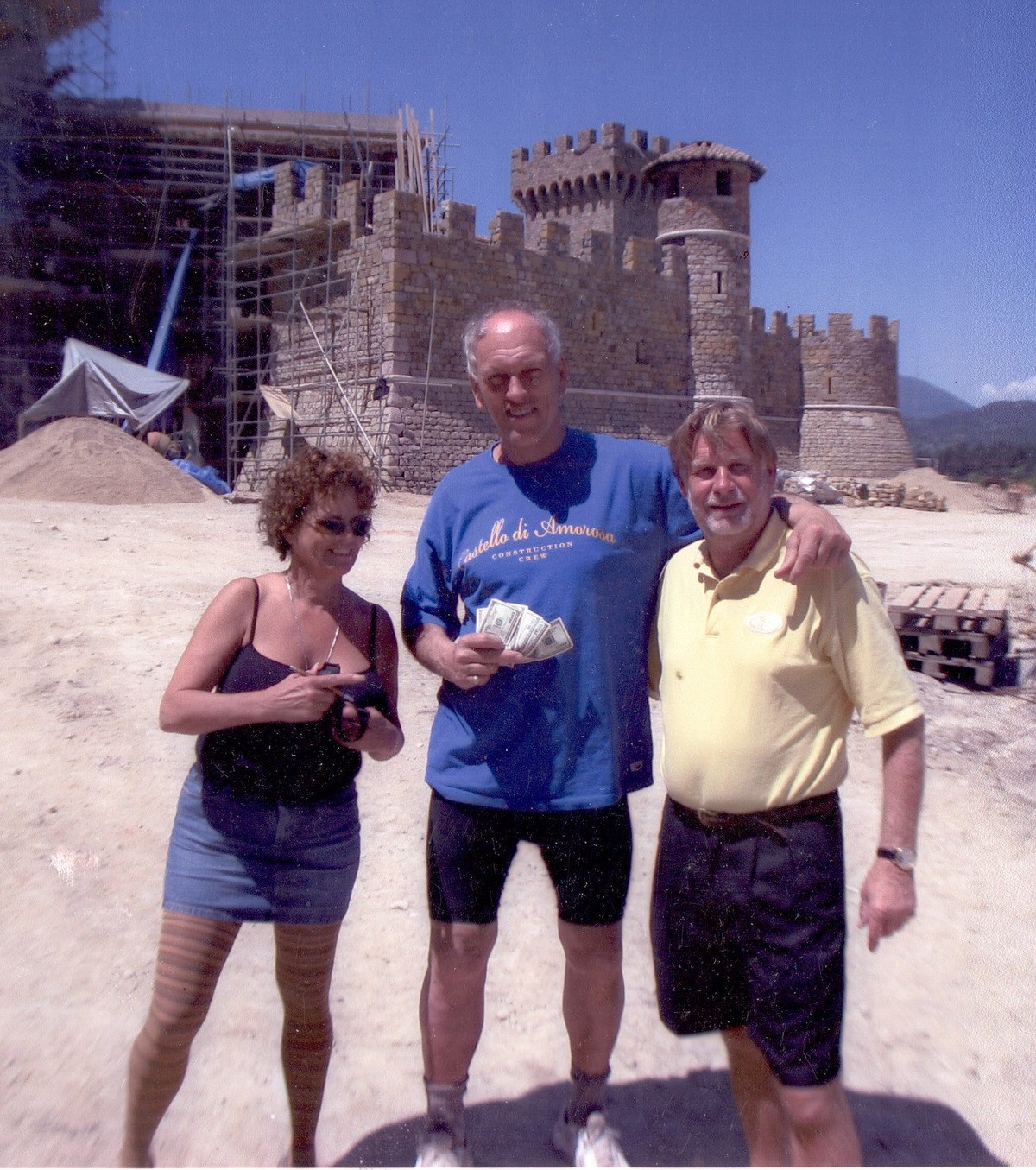
And I had my first paying customers, Peter Thomas. They love the Napa Valley. Photo taken April 29, 2006.
I had accumulated a wealth of knowledge on medieval architecture, a huge library of books, photos, plans and detailed sketches. I couldn’t wait to get started. The renovation of my historic Victorian at the bottom of the hill on the same property would have to wait. I was going to build my castle first.
Within a short time of acquiring property on which I would build, Lars Nimskov, the naval architect from Denmark, came from Italy and we began working on plans which were submitted and approved by Napa County a year later.
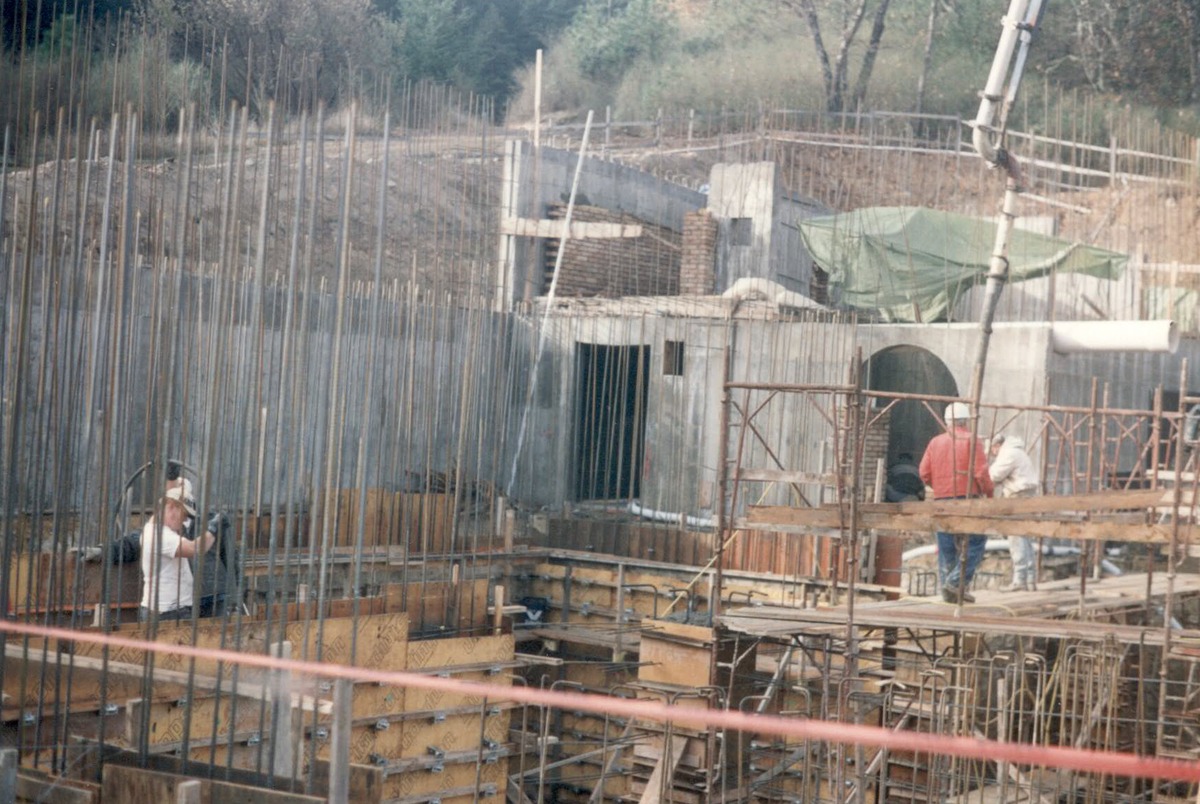
Lars Nimskov (in red jacket) oversees construction of Castello di Amorosa in 1998.
We would build the underground cave and cellars first. Then we would build the castle walls, towers, and all above ground structures. I had been saving my money for years. I was sure that with my savings coupled with current earnings I could manage financially if I were prudent in other areas. Construction I figured would take about five or six years. Boy, I was wrong on both accounts!
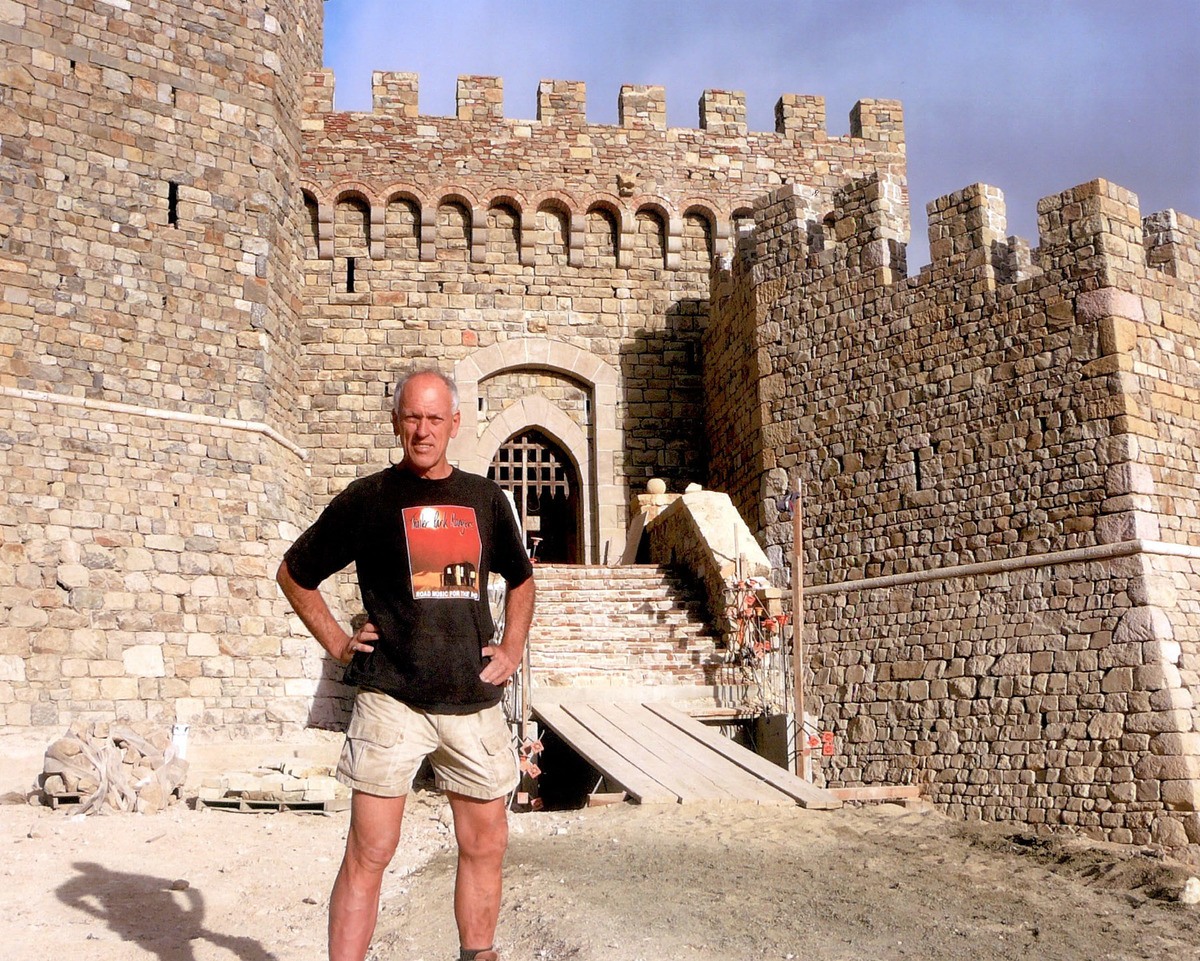
Dario Sattui, September 18, 2006. The Drawbridge is under construction. (Photo: Pat Daniels)
On January 5th, 1995, we began construction of 900 linear feet of caves. We hired a firm that used a Welsh mining bore which excavated horizontally into the hillside at a rate of 15 feet per day. In five and a half months, the caves were finished; the perfect environment for aging wine with cool, constant temperatures and high humidity. The problem was we now had a mountain of excavated, poor-quality soil we didn’t know what to do with.
And the excavating was just starting. We had three more underground levels (originally one level until I expanded the building) of cellars to excavate and then build. The mountain of dirt became progressively higher.
Fritz Gruber, the master builder from Austria and one of the few persons in the world who knew medieval building techniques, agreed to come for three months with six men. They were to build the first two rooms and show us how it was done. Shortly thereafter, seven men arrived and moved into my house along with Lars. None of them, save Fritz, spoke any English. My home had been turned into a boarding house. But I knew I had to skimp monetarily to see this project to completion.
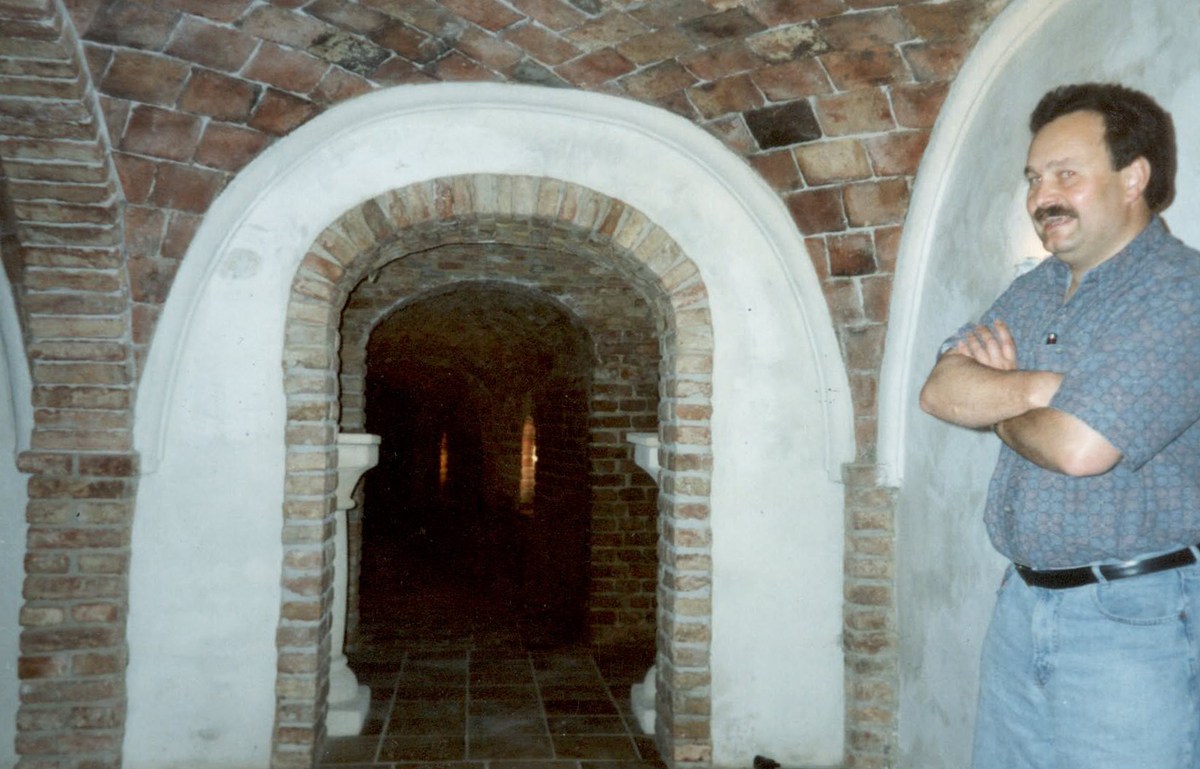
Master builder, Fritz Gruber pictured with one of his works of art in Europe.
Three months later, Fritz and his men left for Austria. I was really concerned we would not be able to do complex medieval ceiling vaulting ourselves and we would have to stop building or construct ceiling which were not authentic. But Lars was very capable and, by observing for three months, figured out how to do it.
Through rain, occasional snow, cold, heat, and heavy winds, we built Castello di Amorosa, working six days a week, usually ten or more hours a day. Over the years, we employed builders from eight different countries and materials from five.
I kept changing and enlarging the plan, carried away with this obsession to build ever better and ever more. When things weren’t done absolutely authentically and correctly, we tore them down and started again. Along the way we kept referring back to source materials and photos, making sure that every minute detail was done properly.
As the years of building continued on, I divorced, lost my hair, became more wrinkled, was struck by a car crossing a San Francisco street, and endured a major flood and a slowdown of my energy. But I always kept building. The 5-6 year project expanded from the original 8,500 to 121,000 square feet and 107 rooms, all different. I went through my money- all of it. Then I sold all my stock to raise cash, often when the market indicated to do the contrary. When that money didn’t suffice, I sold my castle in Tuscany. I fired my housekeeper, then the gardener in an effort to save money to use in construction. I skimped everywhere I could to keep building. And the years of construction kept slowly rolling by. Instead of semi-retiring to Italy in 1994 as I had envisioned doing, I was working harder than ever at both V. Sattui, my original winery, and on building Castello di Amorosa. But I loved it. I couldn’t wait to get out of bed in the morning and hurry to the construction site.
Finally in 2005, I realized that I might not finish the project in my lifetime. I replaced Lars Nimskov, with whom I did not get along, but endured his bad temper because he understood what I wanted and was capable of doing it. I thought of hiring an American contractor, but those whom I had met lacked the knowledge of medieval construction and were intimidated by the project with no idea how to build it.
But through a friend, I found an Italian builder, Paolo Ardito from Bologna. We met at a freeway off ramp in Italy. We were wary of each other at first, but we both took a chance. He spoke virtually no English which complicated things, and out of necessity I communicated in my bad Italian. But somehow it worked. He brought over seven master masons whom I quickly sent back to Italy upon discovering that master builders they were not. I quadrupled the construction crew to 64 and we kept building.
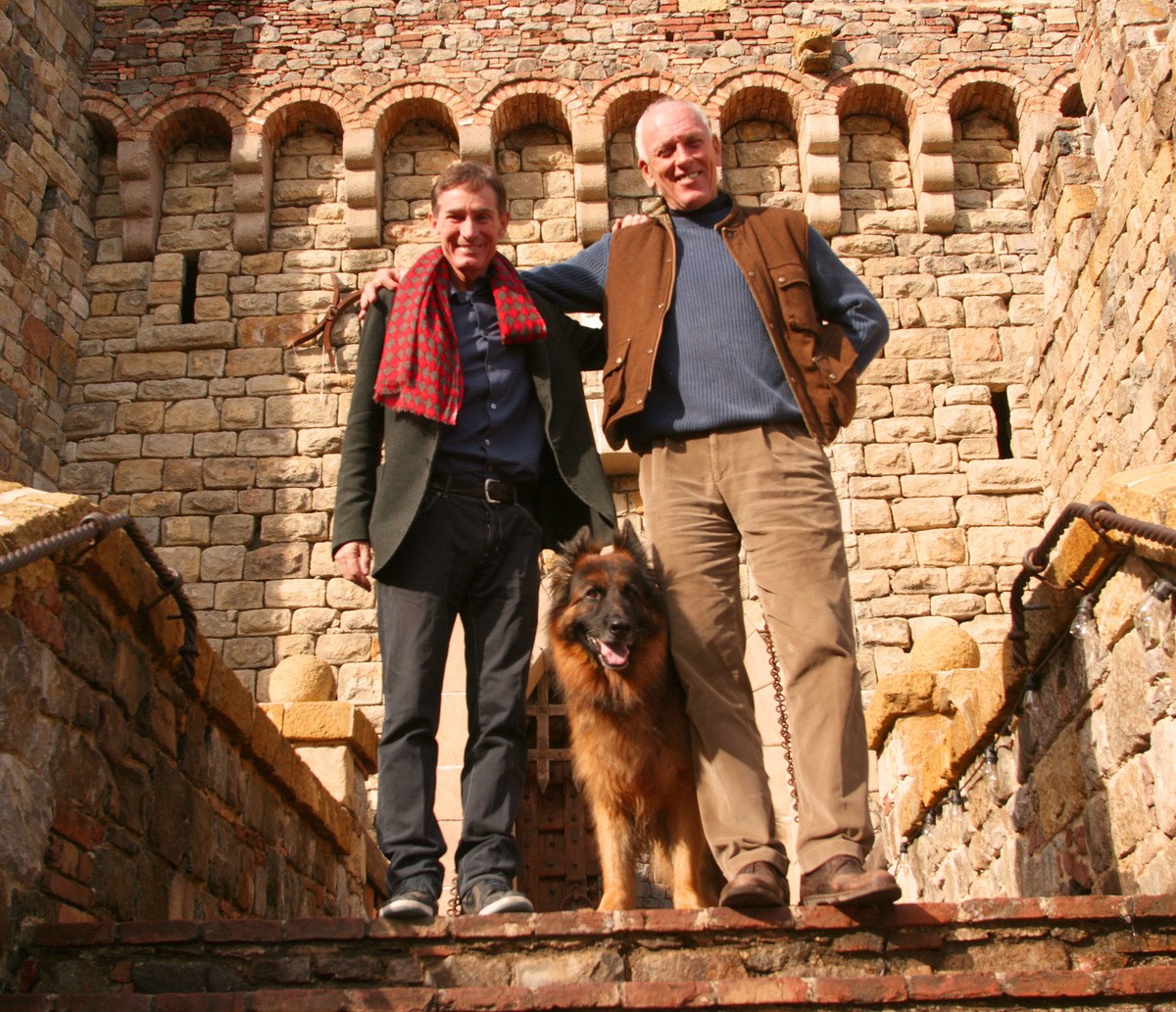
Dario Sattui and Paolo Ardito reconnect on the Drawbridge (with Dario’s dog, Lupo) in 2010. (Photo: Jim Sullivan 2010)
We worked over 10 years building underground, often seeing daylight only at lunchtime. We completed more than 80 rooms underground, each different, using all the ideas I had discovered after researching for many years in Europe. The square footage of the underground rooms alone, built on four separate levels, was nearly 80,000, or two acres. These rooms were to be barrel aging cellars and our wine tasting rooms.

Construction of the cellars under the Tasting Room in 1998.
In 2004, we finally finished the underground portion and began building above.
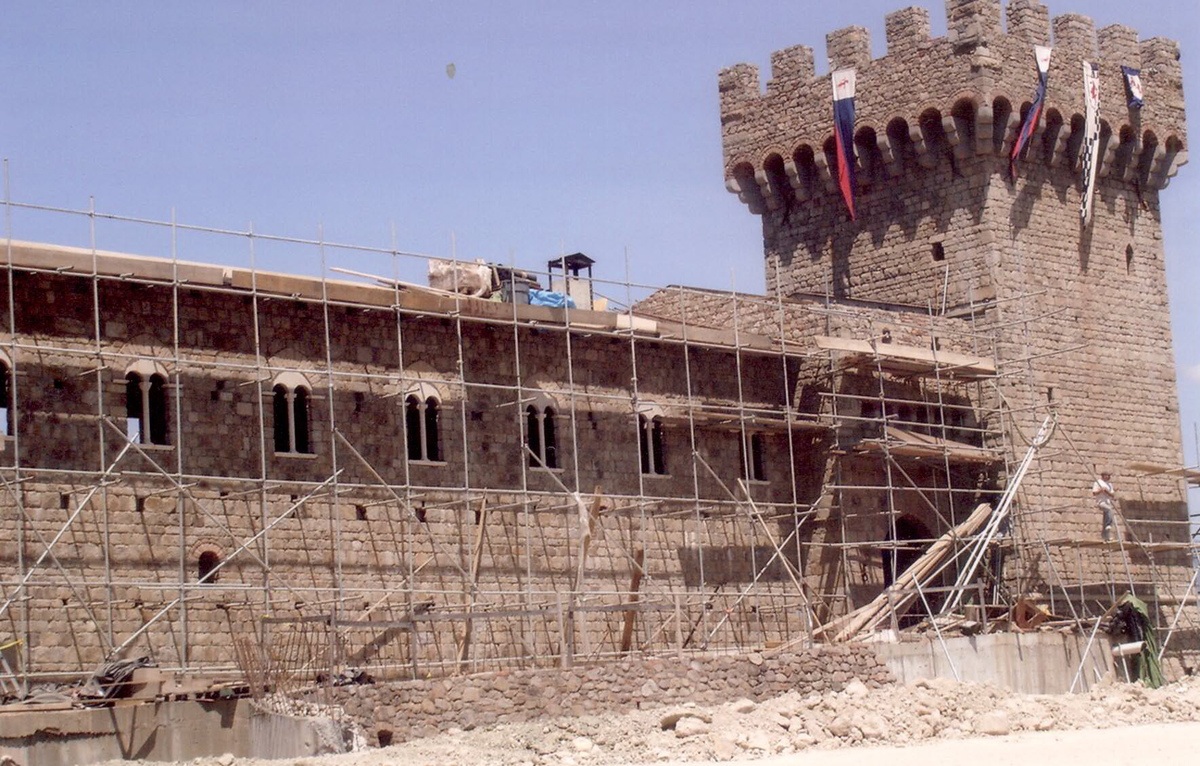
The Great Hall, entrance to Courtyard and North Tower under construction in 2005.
We constructed a dry moat, high defensive fortified walls, five towers, courtyards and loggias, a Tuscan farmhouse and other outbuildings. We erected archways, a big kitchen, a Great Hall that took one and a half years to completely fresco. We built stables, an apartment for the nobles, wine fermenting rooms, a church and chapel, secret passageways, and even a prison and torture chamber. I was bent on being totally authentic incorporating every element of a real 12th – 13th century Tuscan castle. I attempted to depict how castles evolved over time, by erecting doorways and niches and then bricking them up. We built a partially destroyed tower.
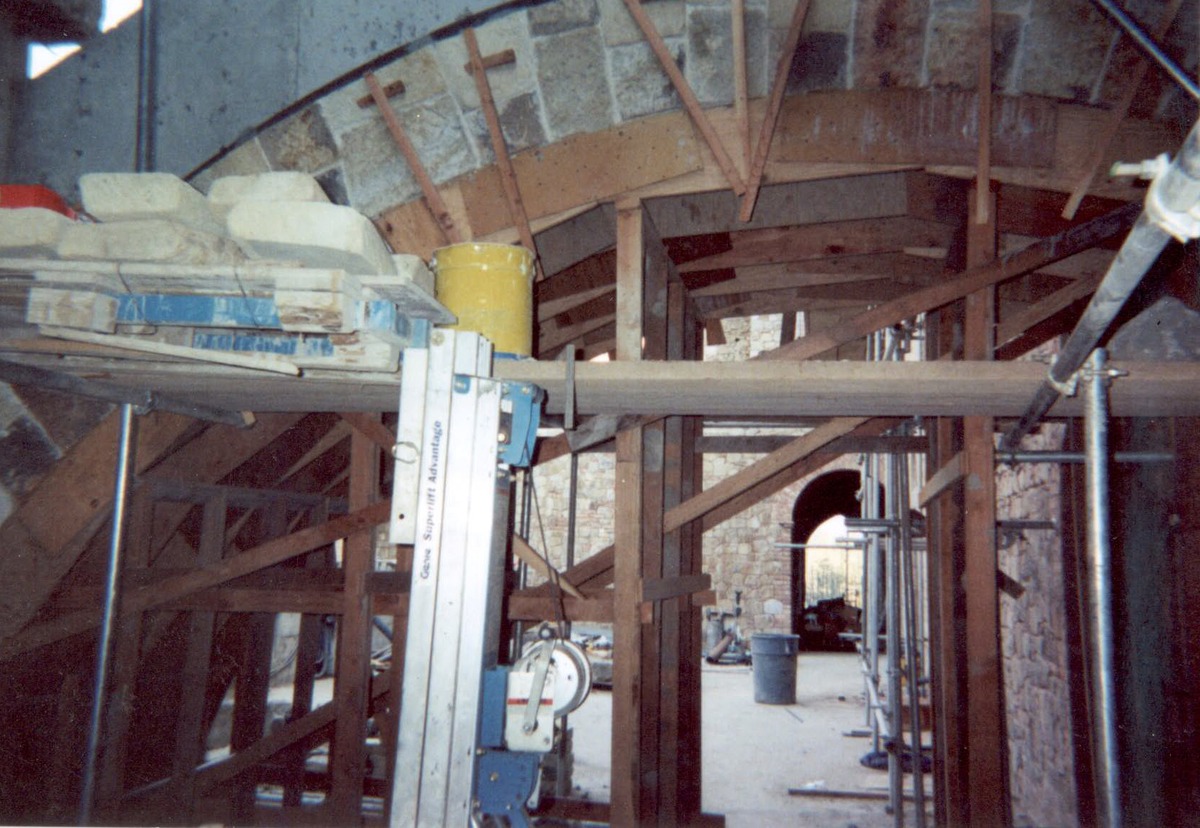
Entrance to the Courtyard from the Crush Pad in 2004.
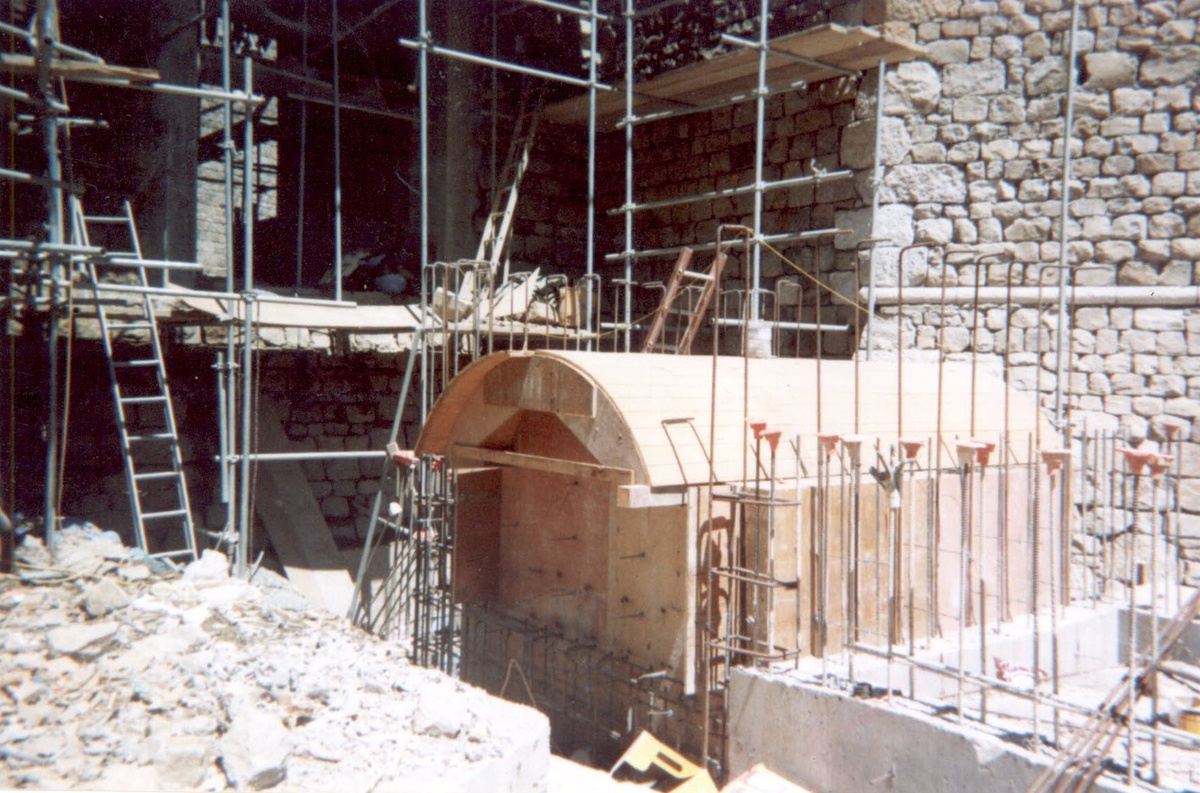
Construction of the Drawbridge steps. The entrance to the Castello can be seen in the upper left. Photo taken in 2003.
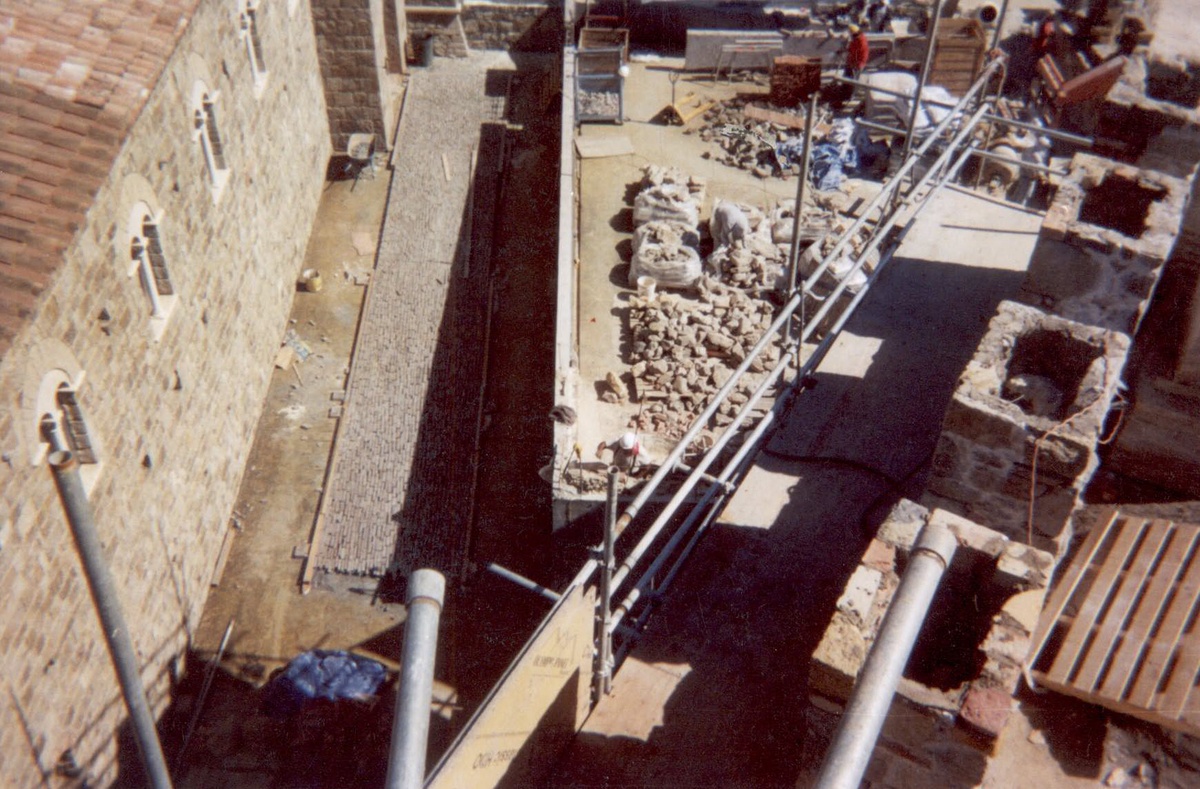
View from the South Tower. Great Hall on the left, Upper Terrace on the right. Walkway to Great Hall in center. Photo taken in 2005.
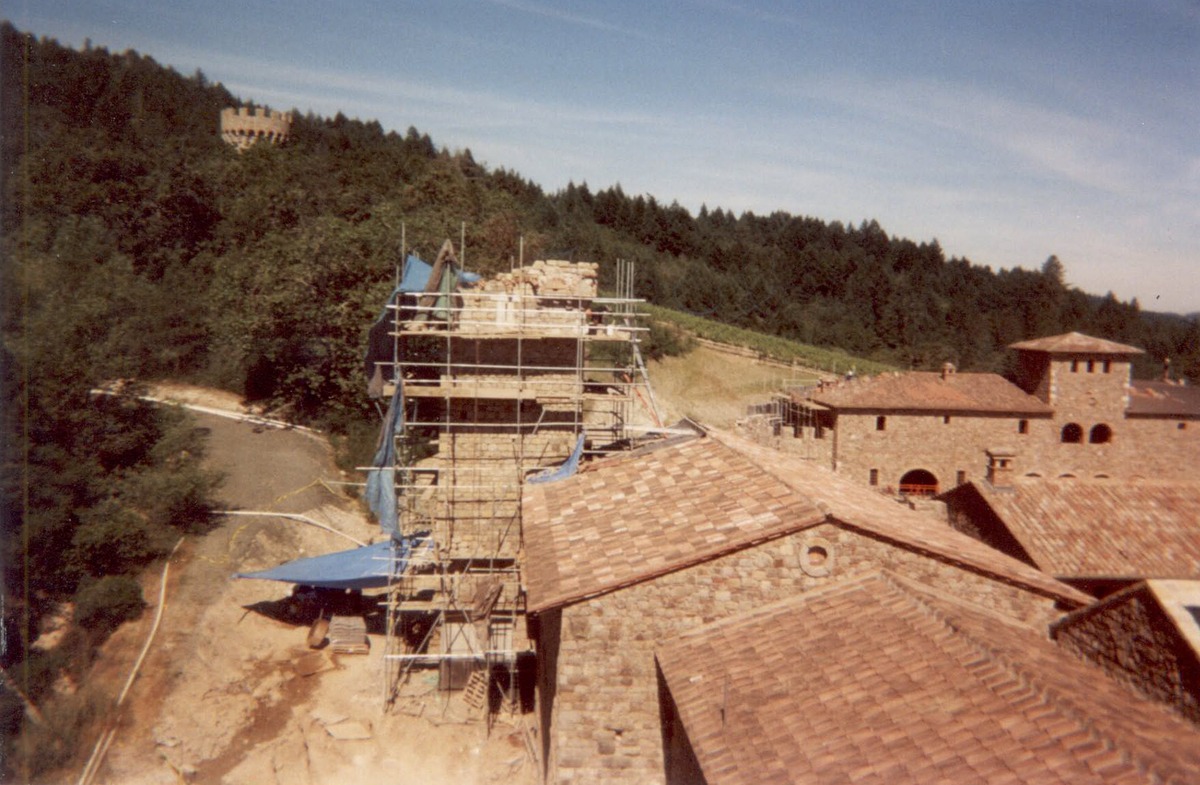
Battle-damaged tower under construction in 2005. Farmhouse (far right) and fermentation rooms taking shape.
Castello di Amorosa appears to be an authentic castle for one reason only: it is an authentic castle, though fancified. We either used construction methods and materials that would have been used 1,000 years ago, or we used very old hand-made materials that had survived up to modern times. A fireplace predating Christopher Columbus adorns the Great Hall, and Iron Maiden from the late Renaissance dominates the torture chamber. A wrought iron dragon from the times of Napoleon hovers over the massive main door. More than 8,000 tons of stone were chiseled, not sawed, by hand to be absolutely authentic. Nearly 200 containers of old, hand made materials were shipped from Europe to lend authenticity.
We spent years sourcing old materials. Where we couldn’t find authentic handmade materials, we created them by using the same methods and materials of long ago. Fritz Gruber supplied me with nearly one million handmade, antique bricks from torn-down Hapsburg palaces. Georgio Mariani of Assisi in Umbria, along with his father, brother and uncle, made all lamps, iron gates and decorative iron pieces by hand over an open forge. Every nail, every chain link, every hinge and lock was hand-done by the Marianis. Their friend, Lucio, made all the leaded glass windows by hand. The Nanni brothers hand-carved all the ceiling beams. Loris Vanni and his brother-in-law Marino hand carved most of the door and window surrounds and the well. Dario Ruffini hand-carved the stone crests depicting my family’s coat of arms. There were many others, mostly from Italy, too numerous to name, who lent a hand to create the only real medieval castle in the United States. Even an Italian architect specializing in the restoration of medieval buildings, Frederico Franci, lent advice.
There were problems, from containers full of materials not arriving on time to the County making us re-grout virtually all the walkways and rebuild all the stairs, as they didn’t quite comply with local codes.
I kept declaring larger dividends than I normally would have from V. Sattui to keep afloat. But finally, in late 2005, I ran out of money. Enter Wells Fargo Bank– from which I secured a large loan. By mid-2006, I was nearly in a panic about going bankrupt and losing my entire property. I simply couldn’t continue to expend large sums of money I had invested in the Castle, the winery equipment, the vineyards and the wine inventory. It had been nearly 14 years without one penny back. I started selling some of the Castle wine cheaply just to raise money. I borrowed from V. Sattui as well as the bank. I was desperate.
Just as with the Castle, I had endeavored to make no compromises with the wines. We planted vineyards in 1994 through 1996. Yet we waited to make the wines until we had older vines to produce the highest quality.
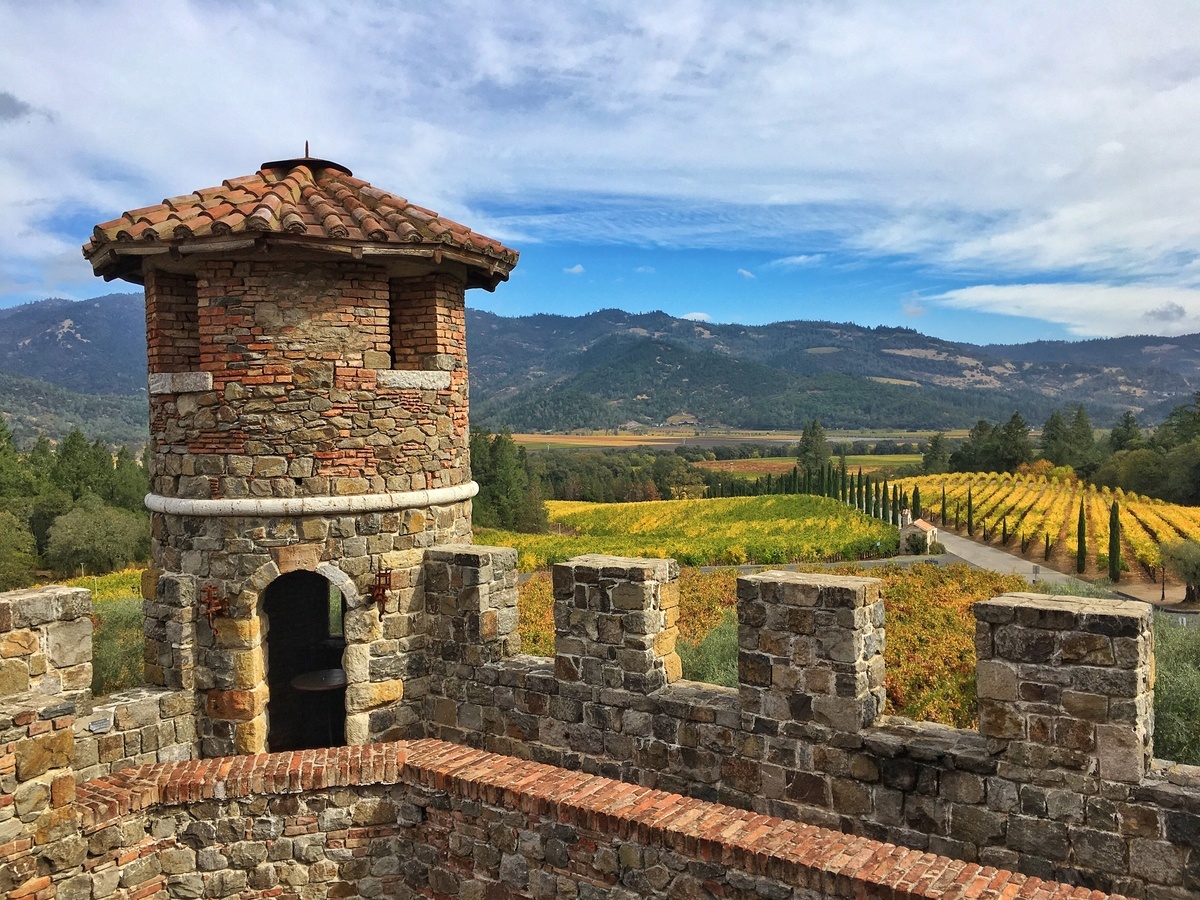
Today Castello di Amorosa produces some of the best wines in the world from its Diamond Mountain District vineyards surrounding the Castello. (Photo: Alison Hernandez 2017)
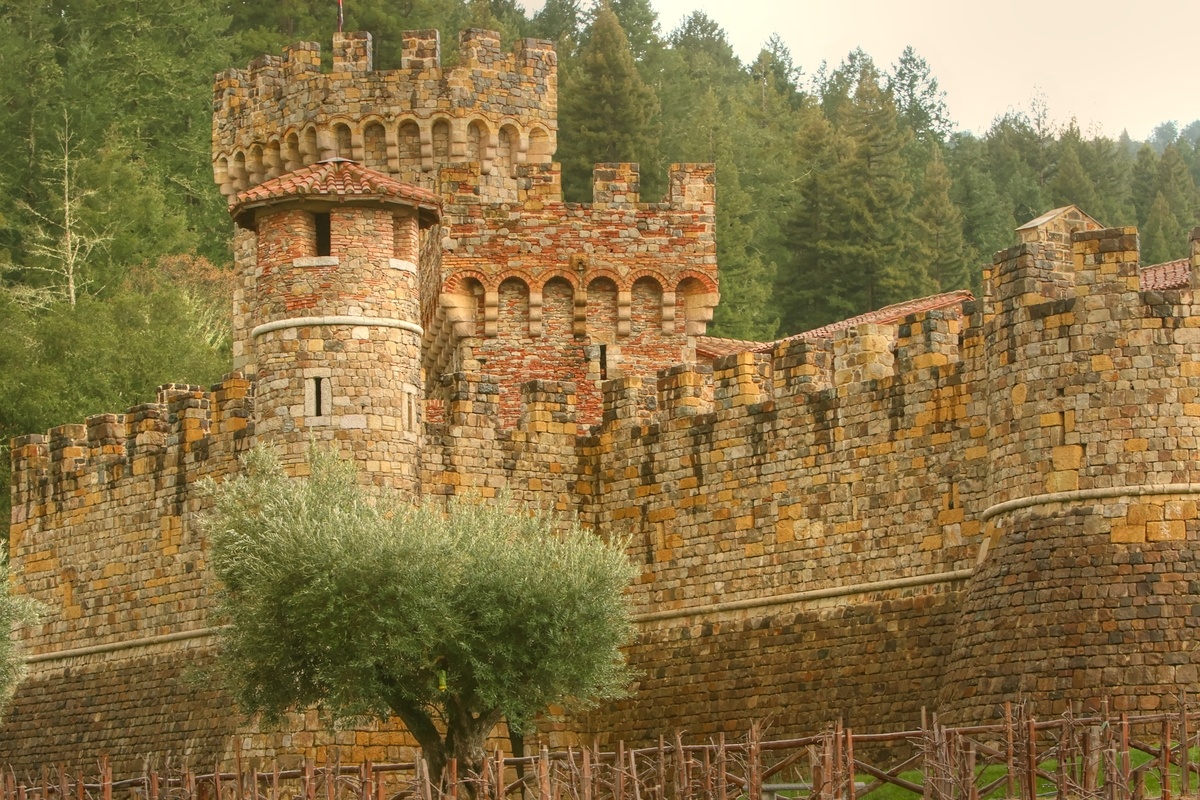
Ramparts, towers, the guard tower and a variety of Castle defensive positions overlook the Cabernet Sauvignon, Merlot, Sangiovese and Primitivo vineyards. (Photo: Jim Sullivan 2010)
Finally, we were able to open on April 7, 2007. I had no idea if the project would be well-received or not. Would I be laughed at or would people respond positively? The first few days after opening gave me hope. The response to both the Castle and our wines was overwhelmingly positive.
Read more about the story of Castello di Amorosa in Dario Sattui’s book, Castello di Amorosa: A Labor of Love
